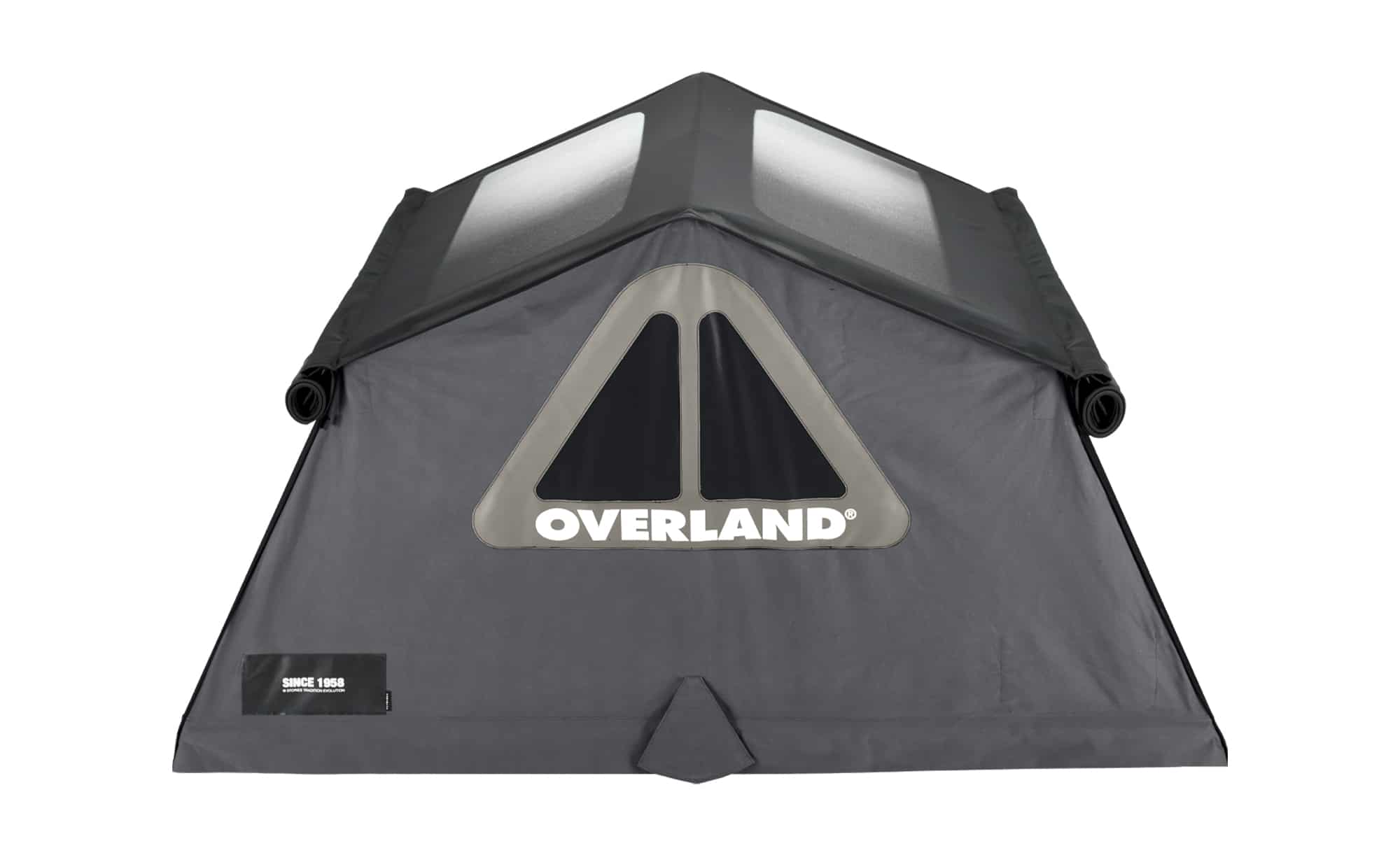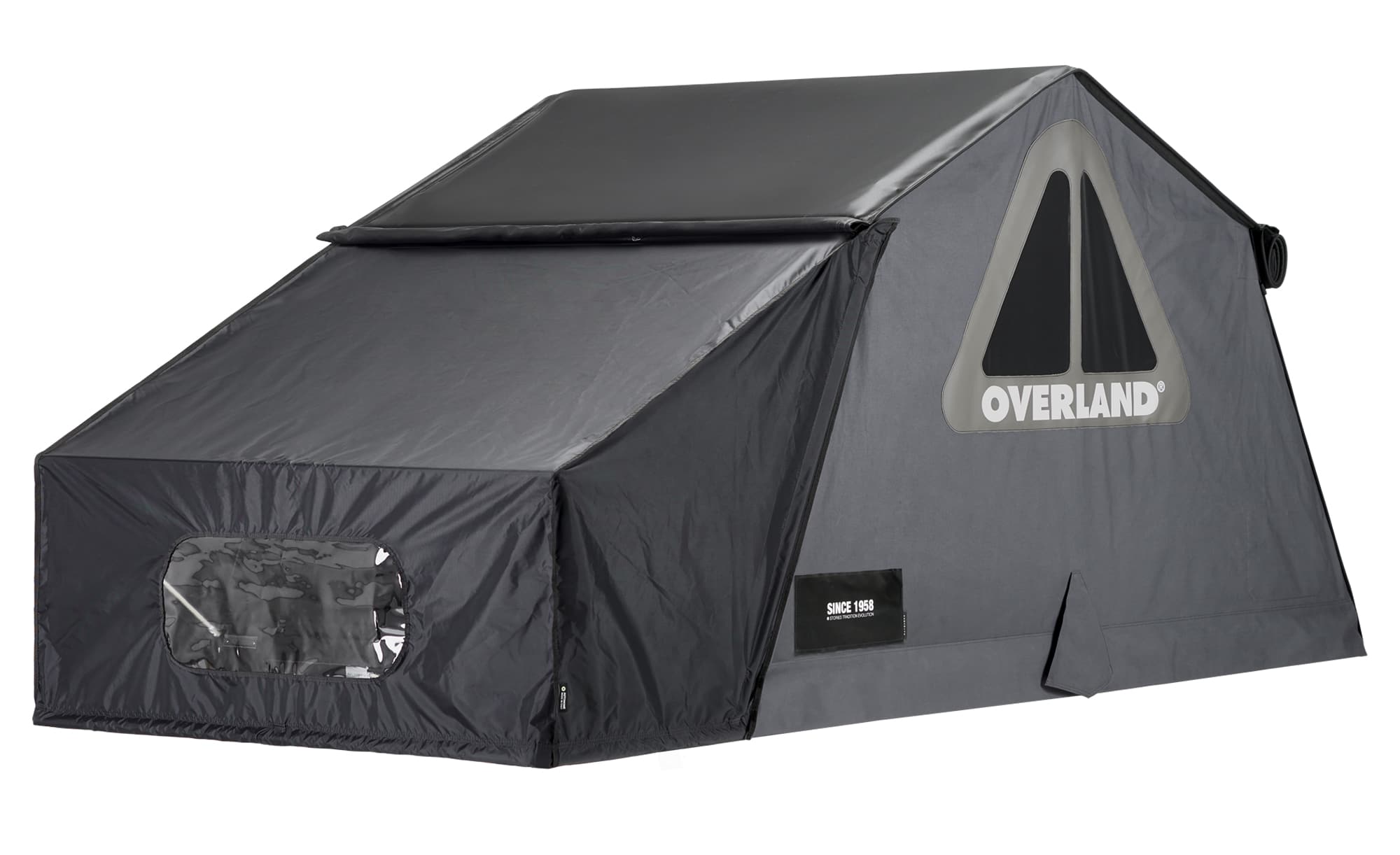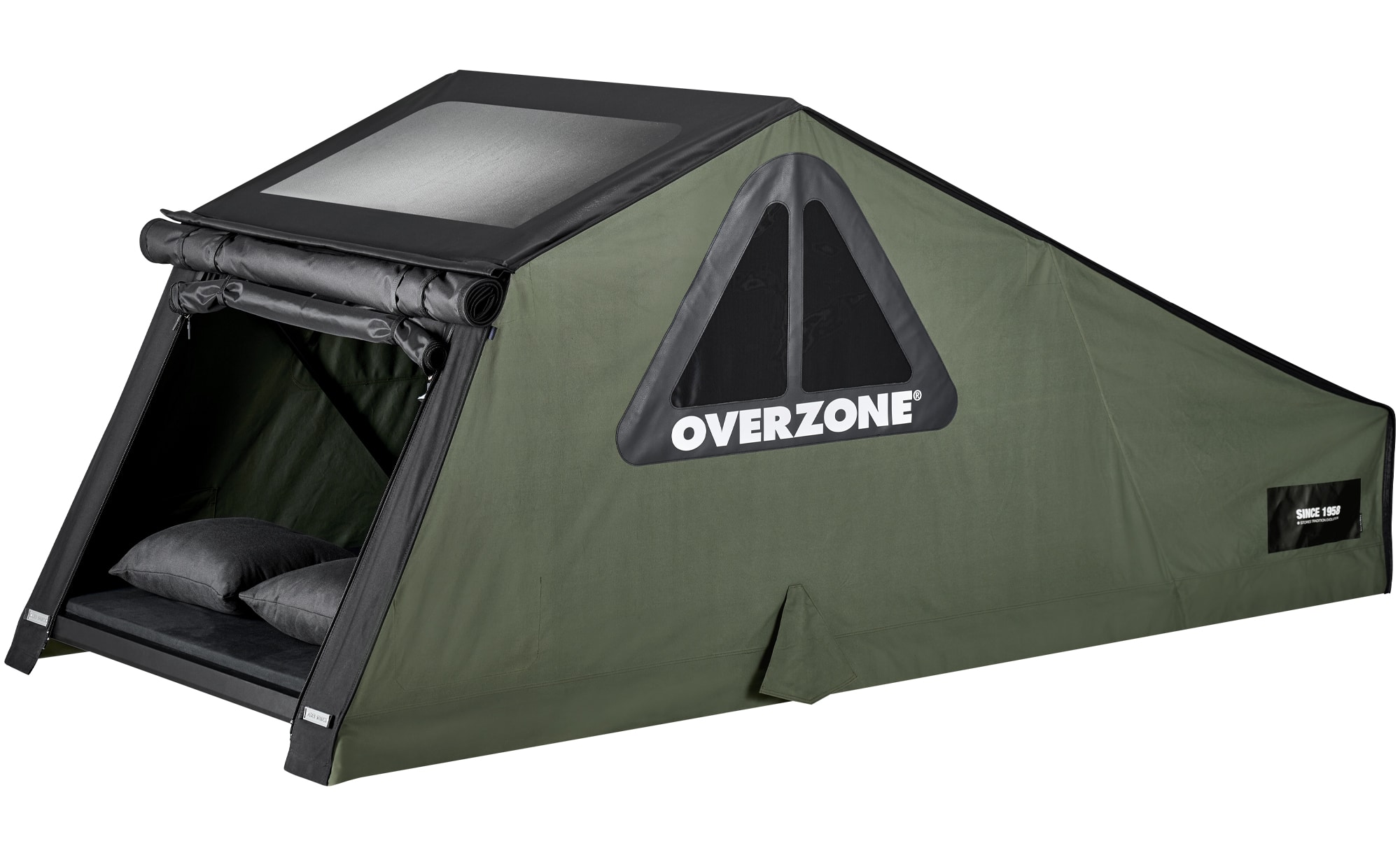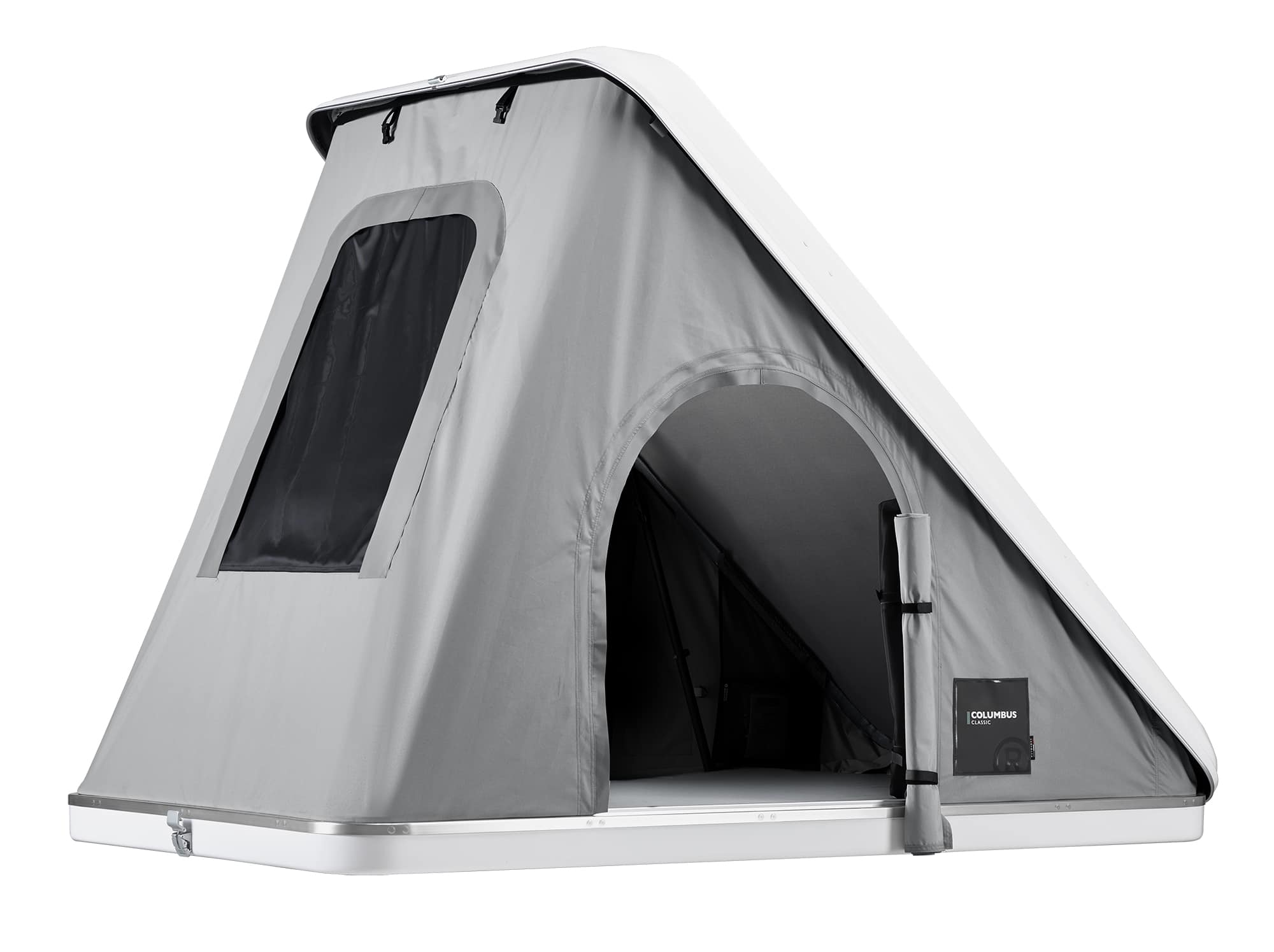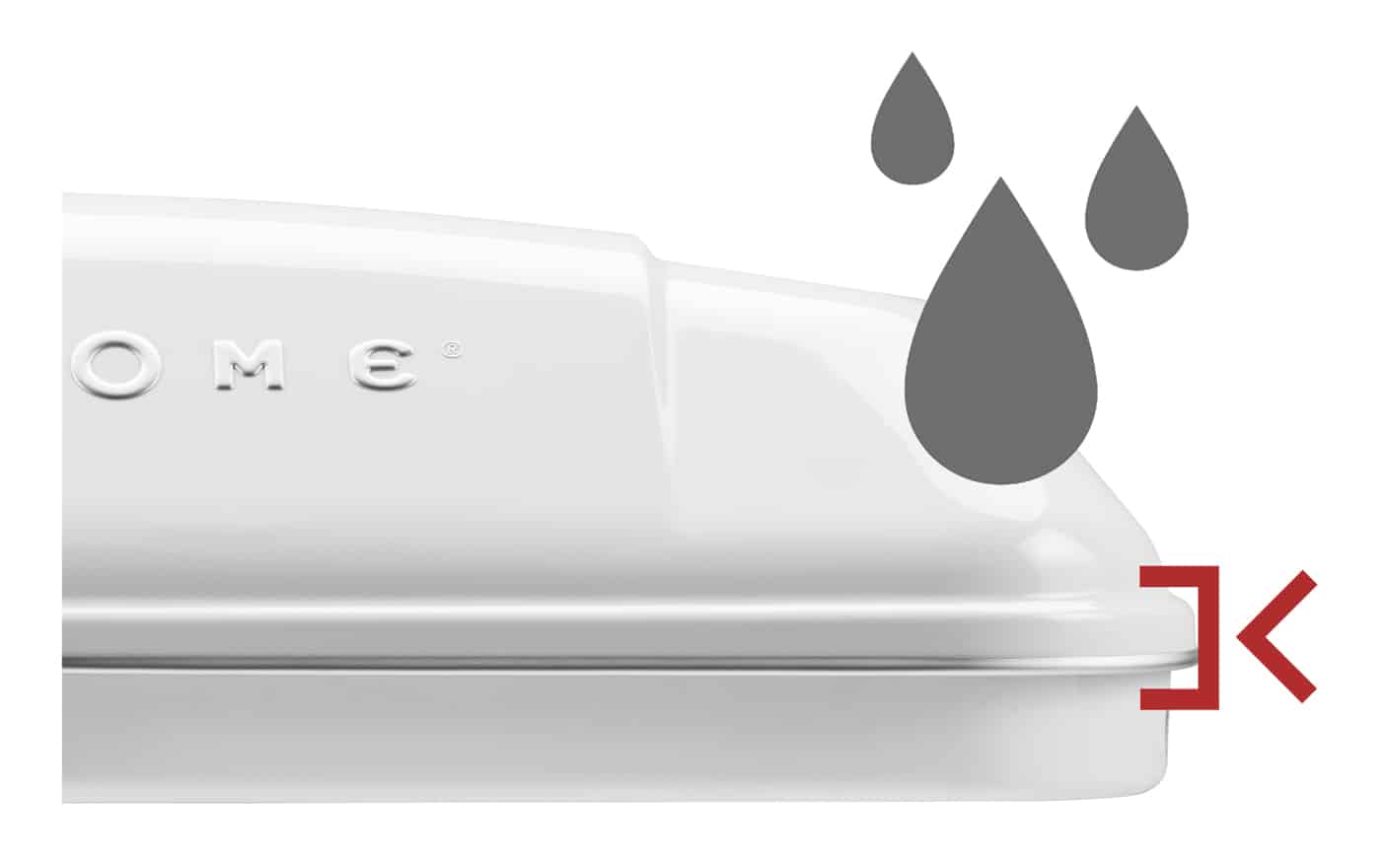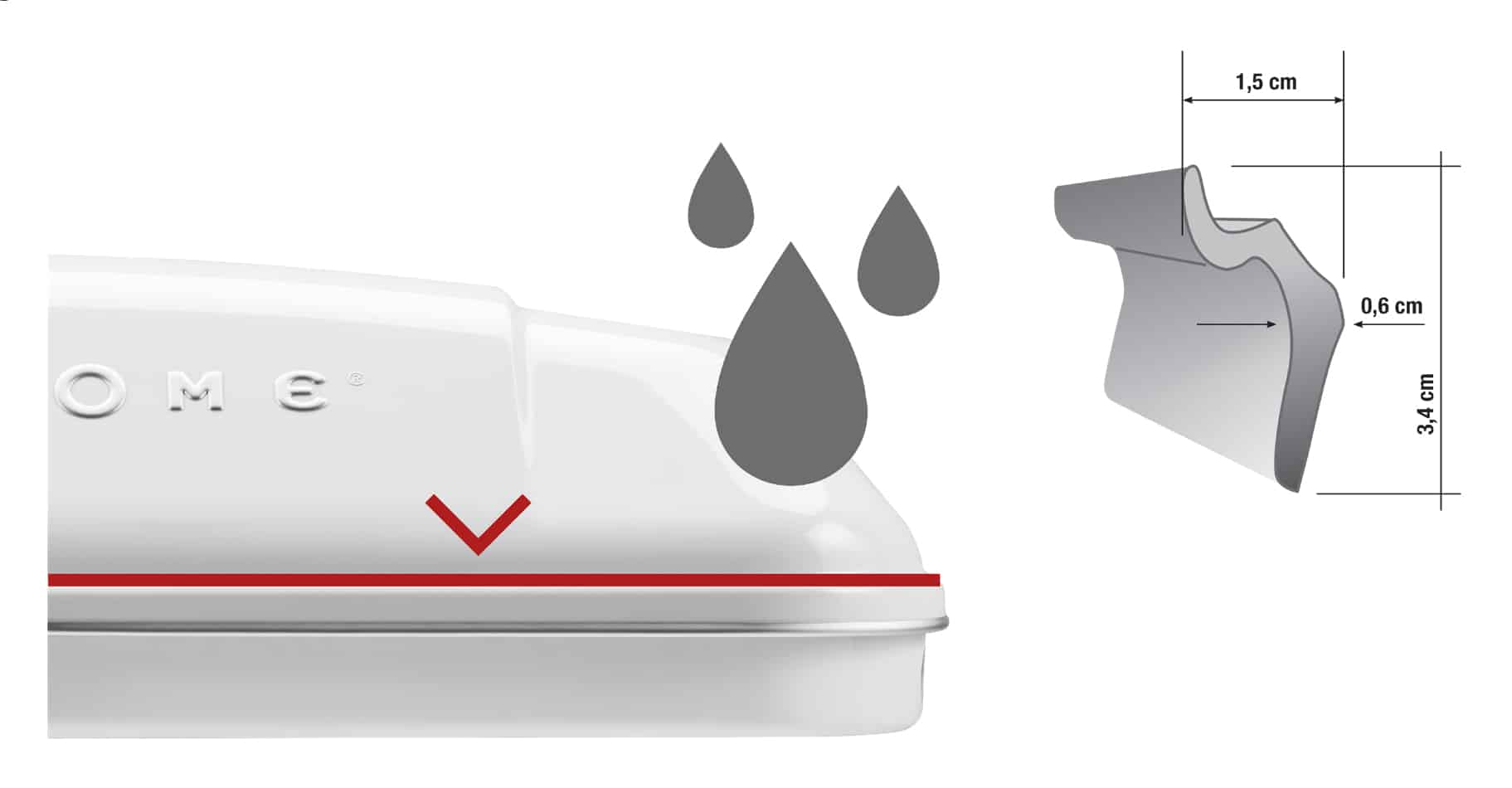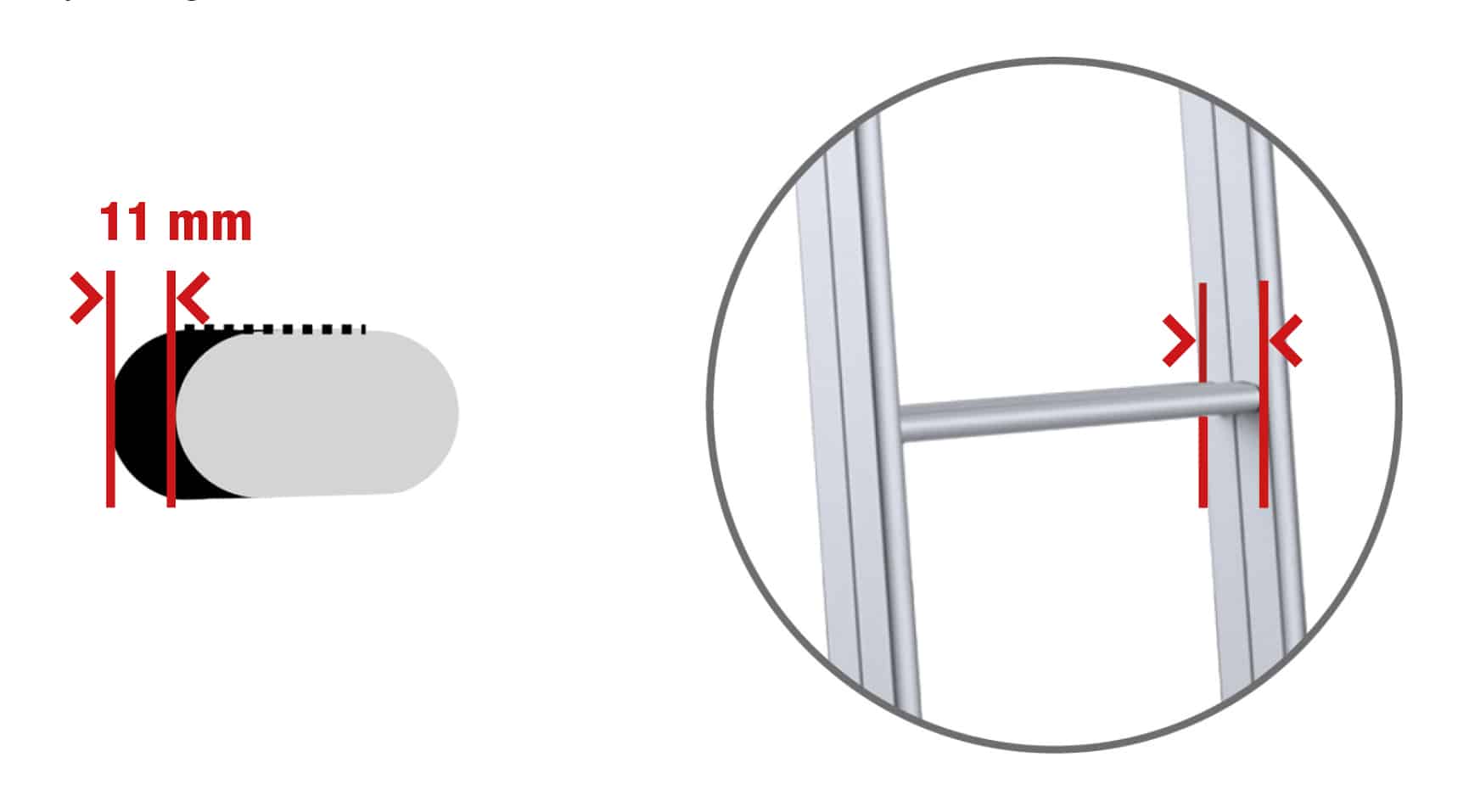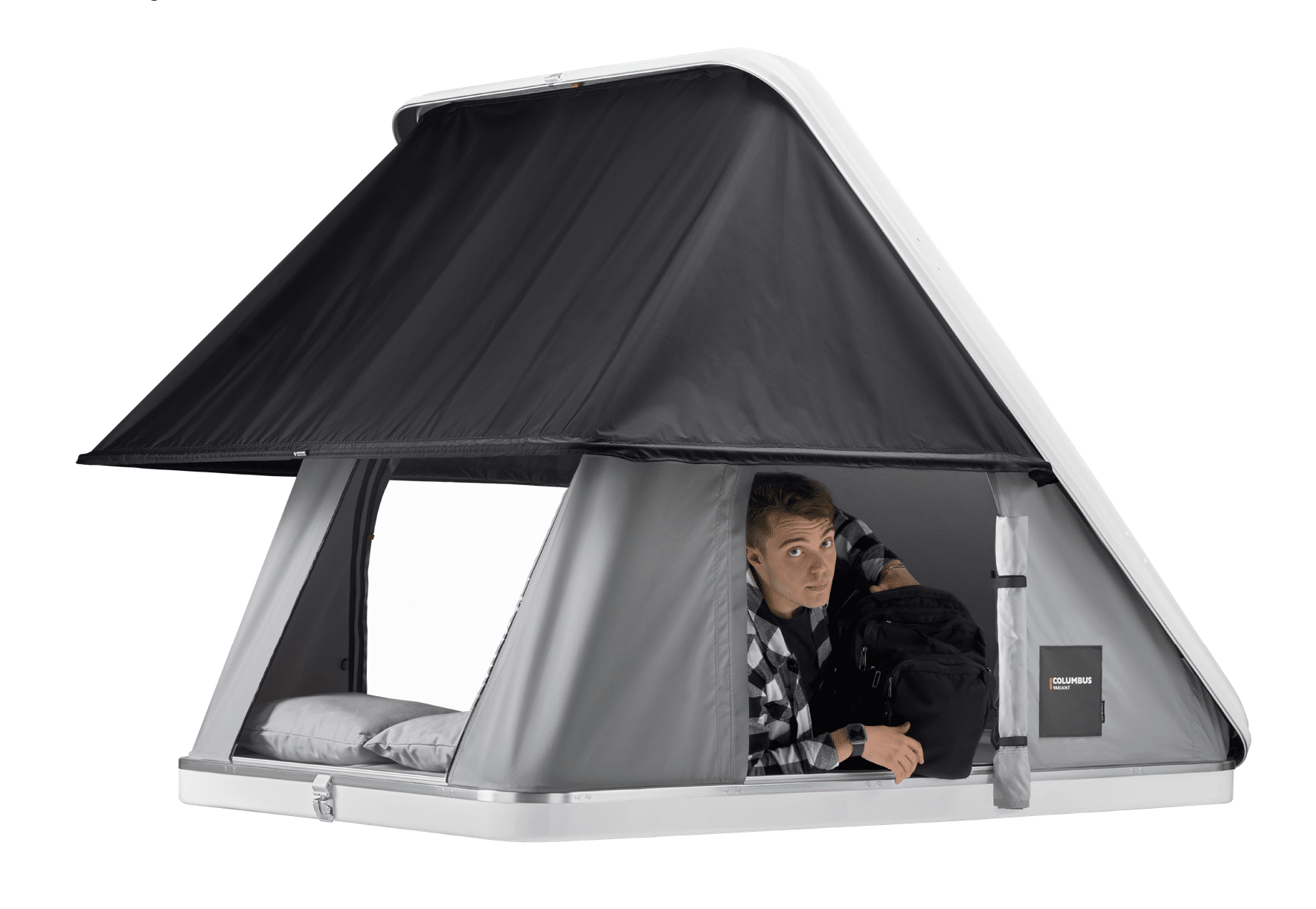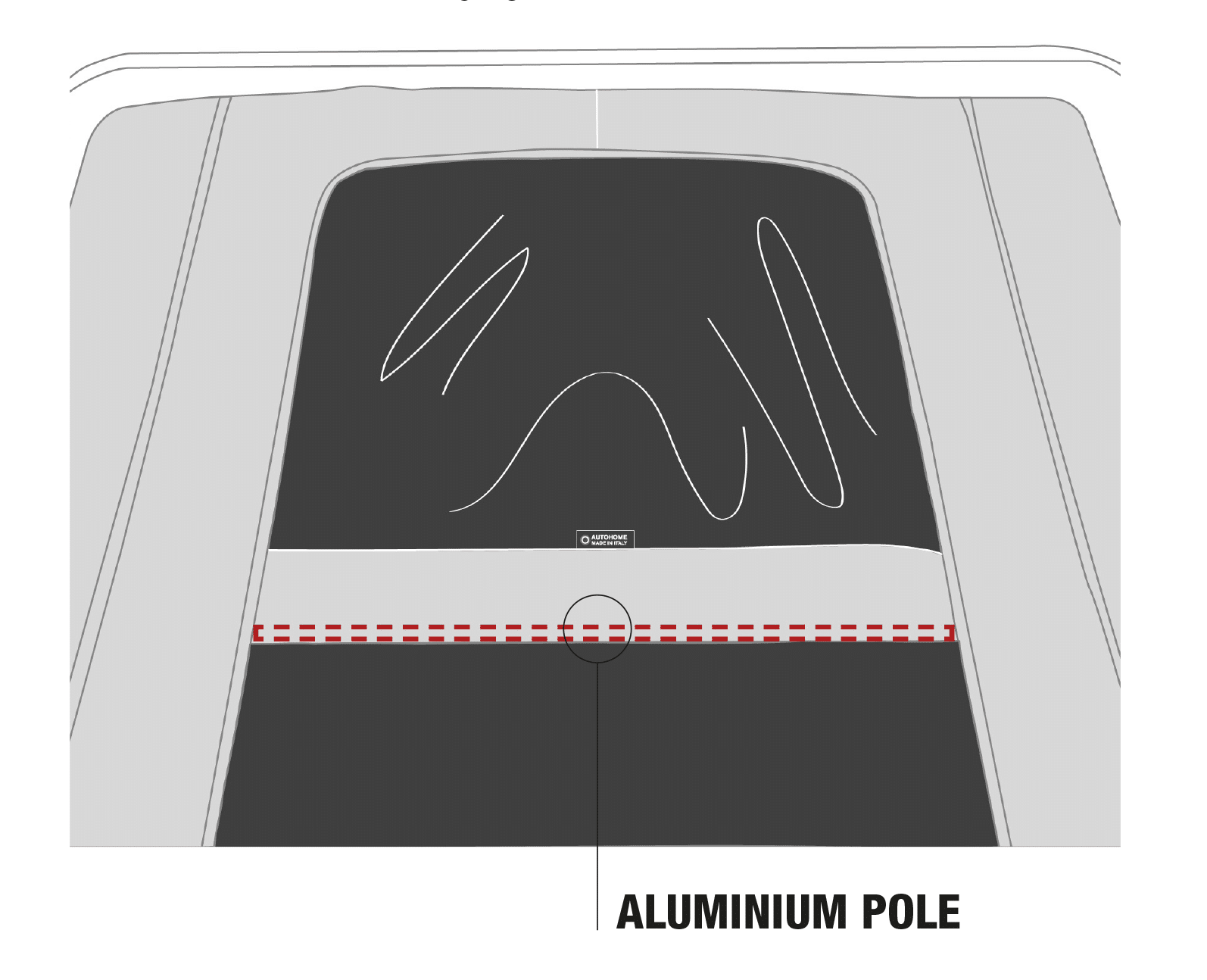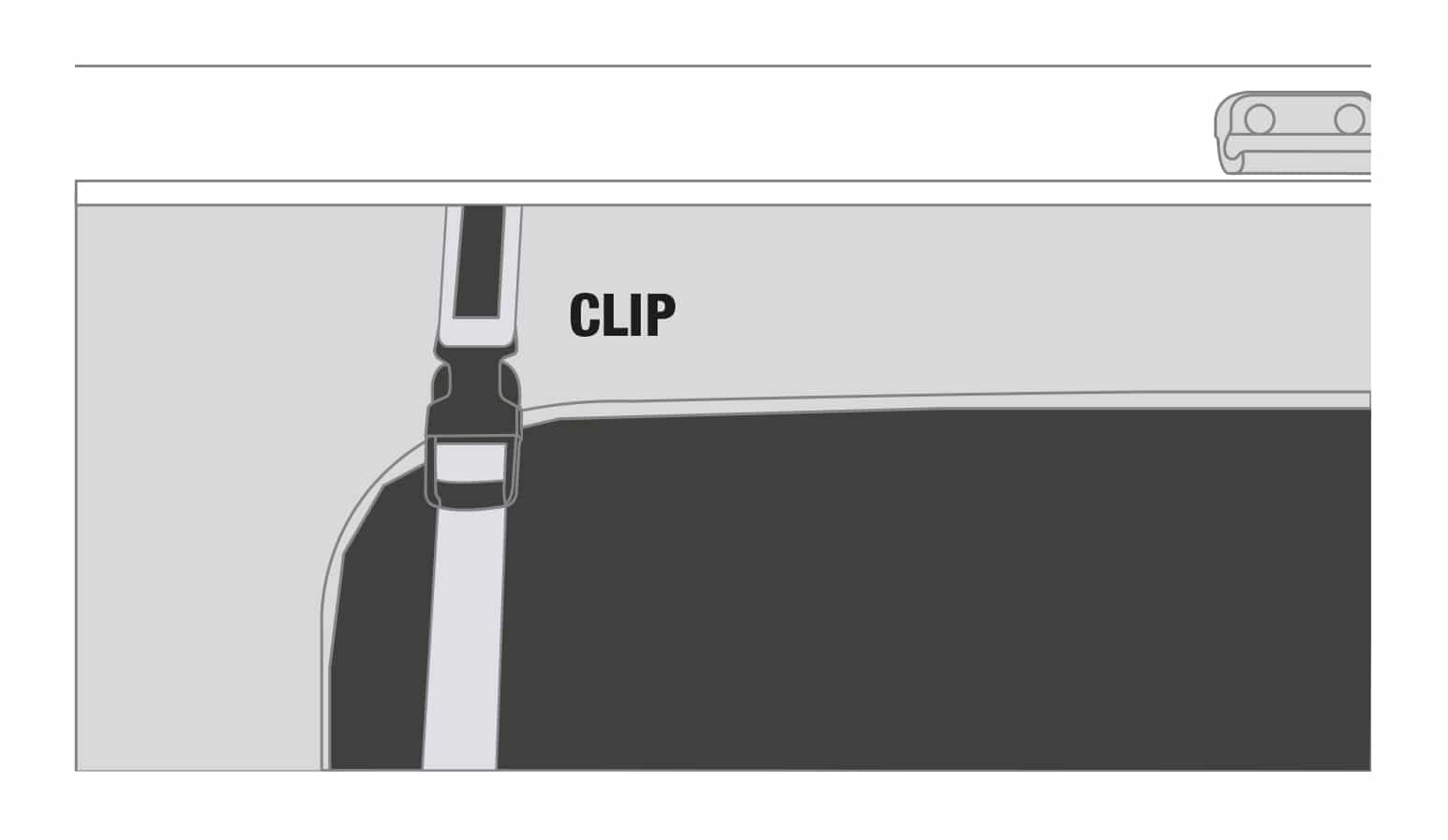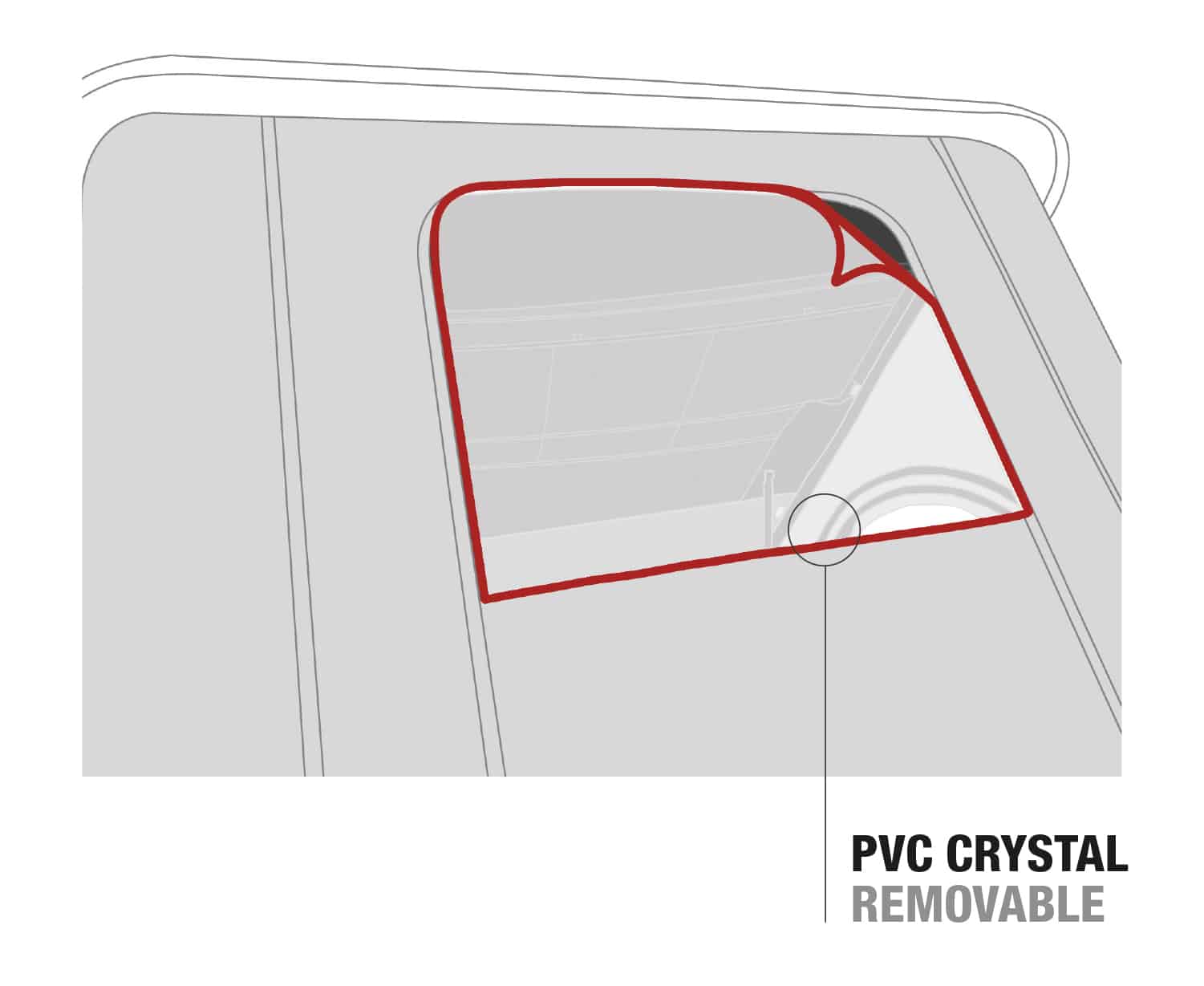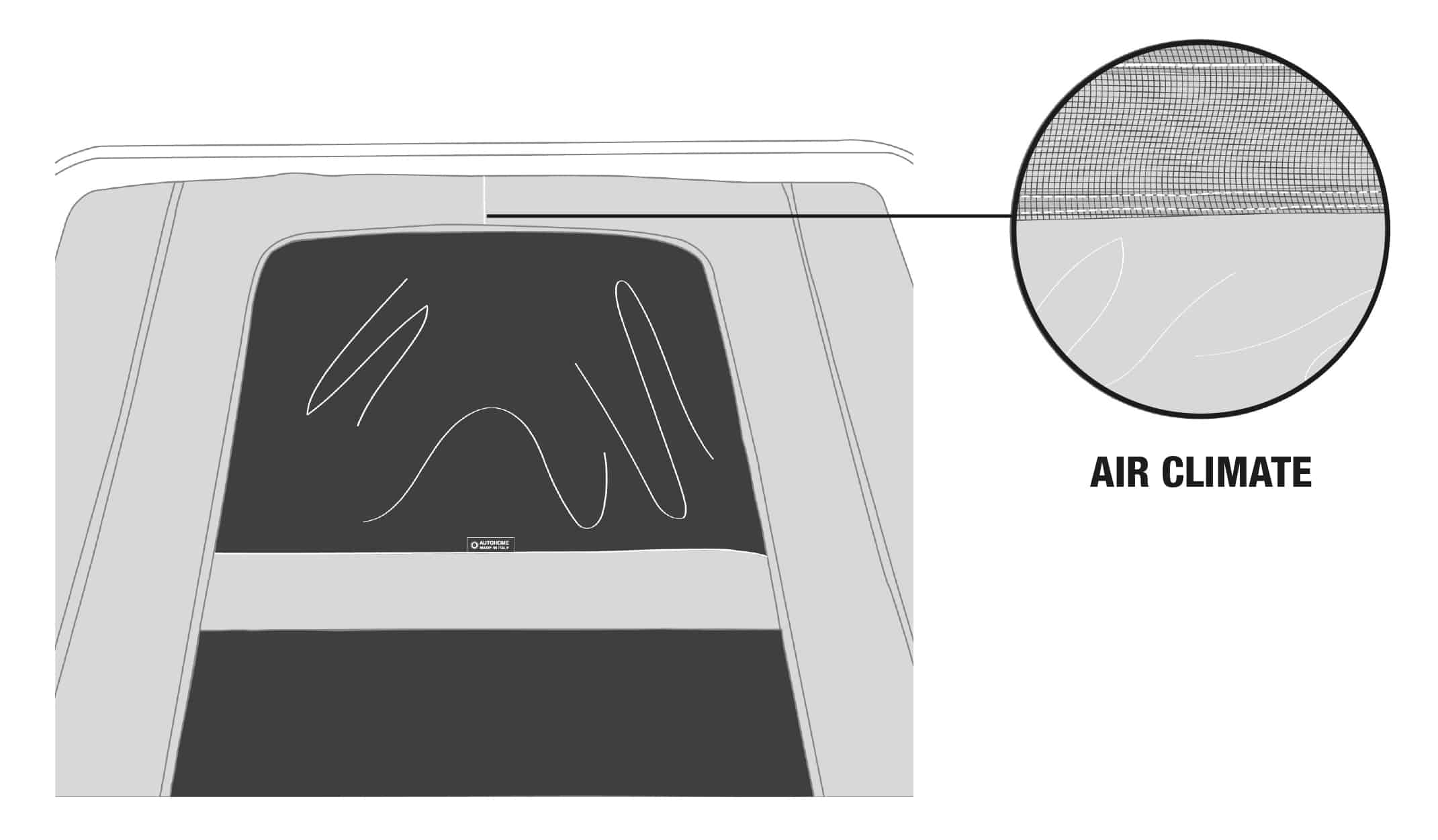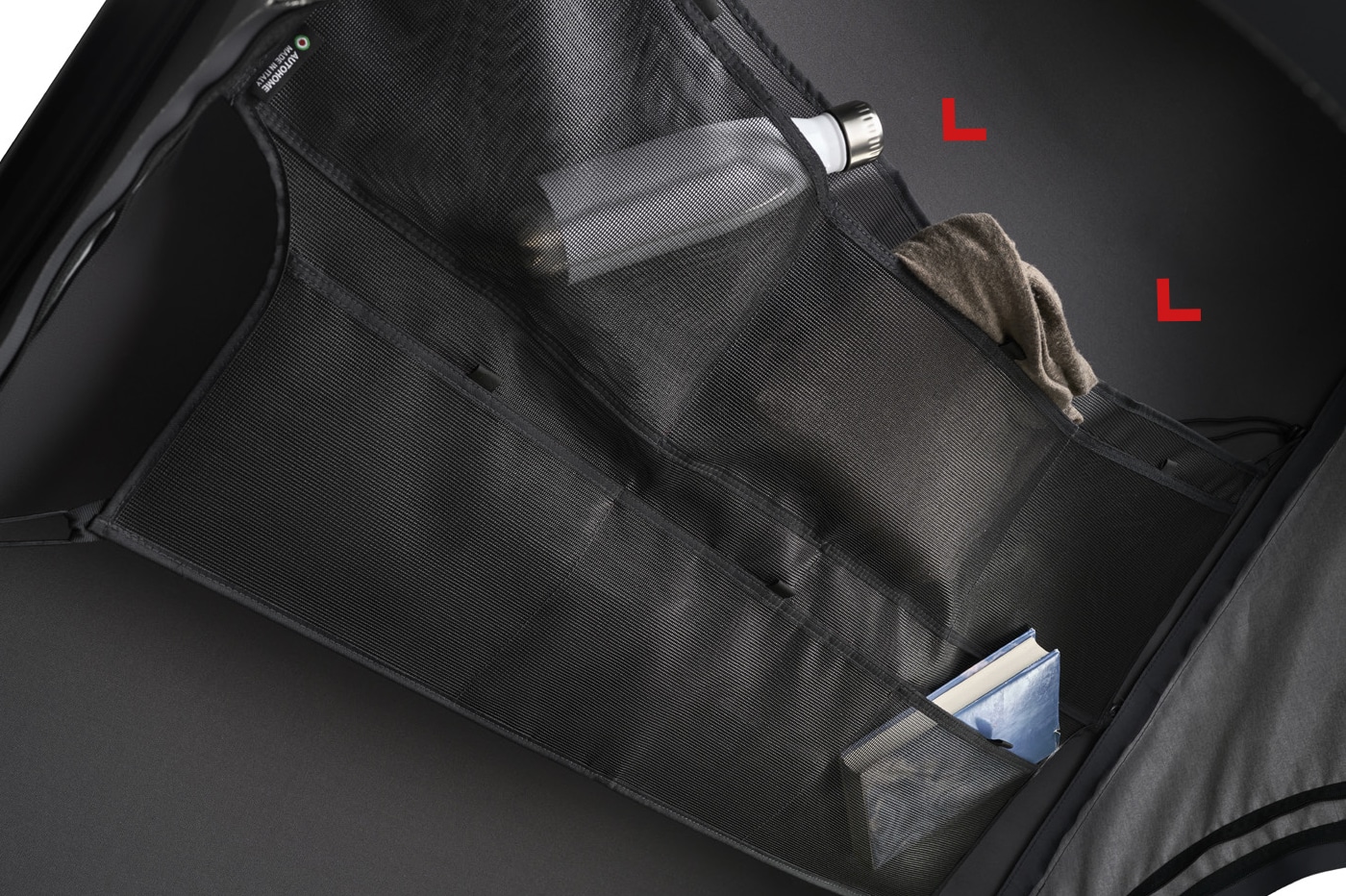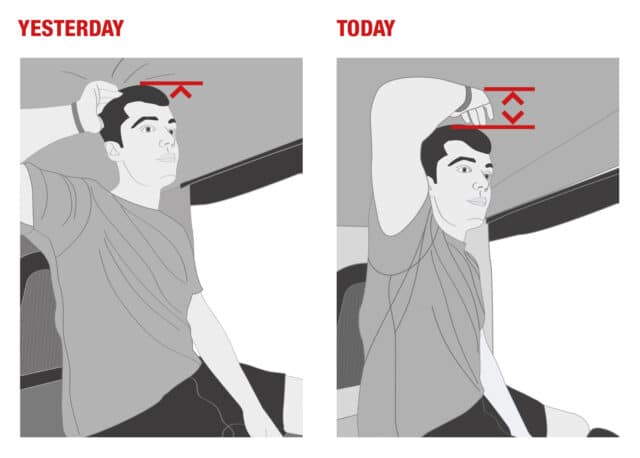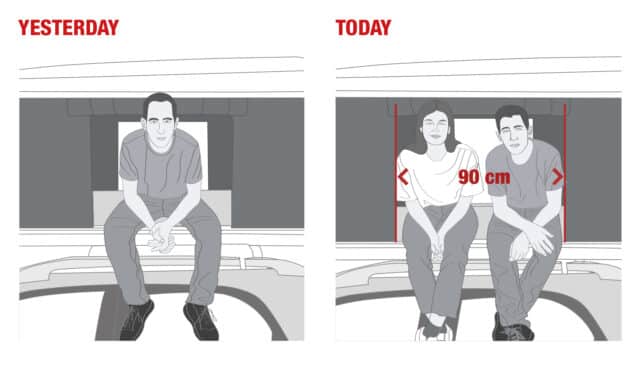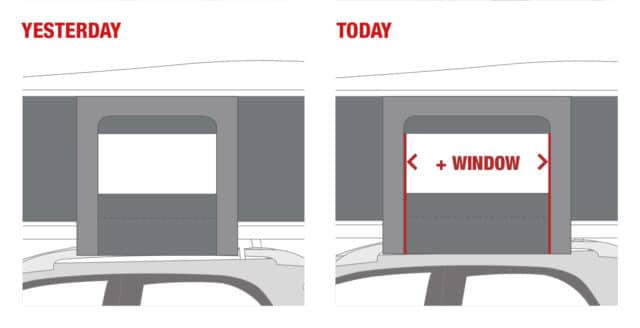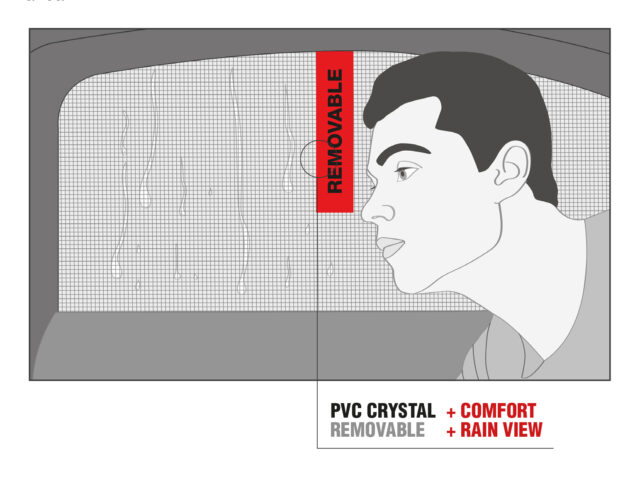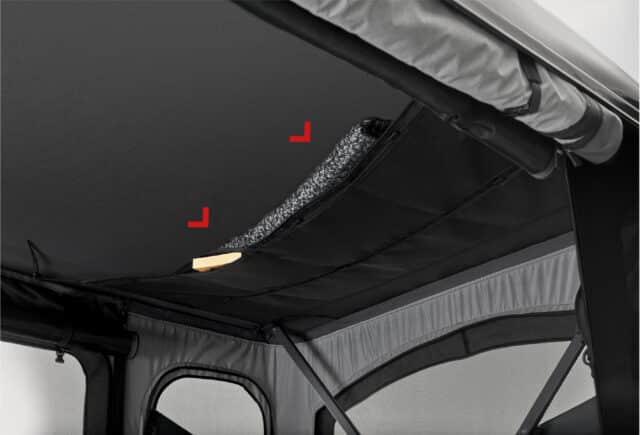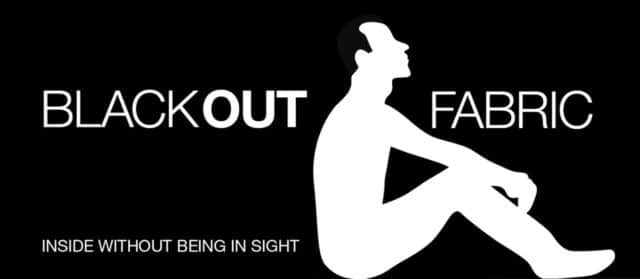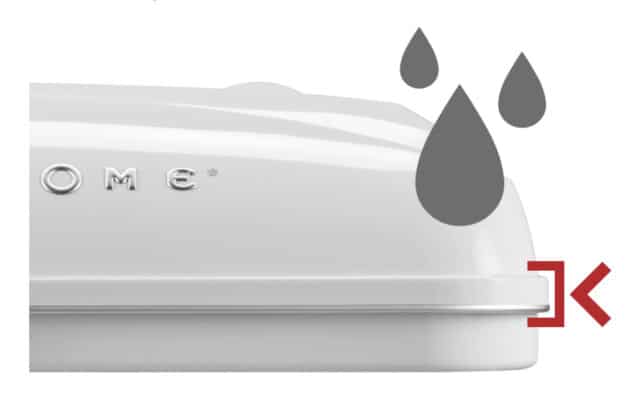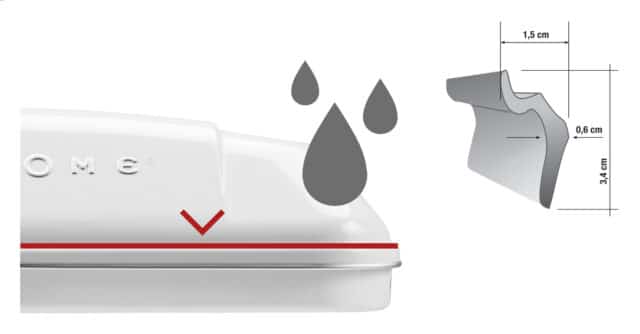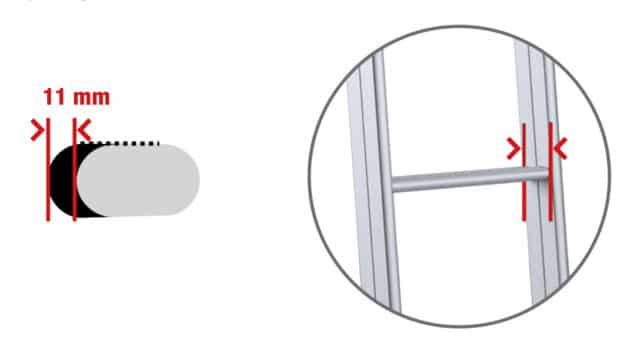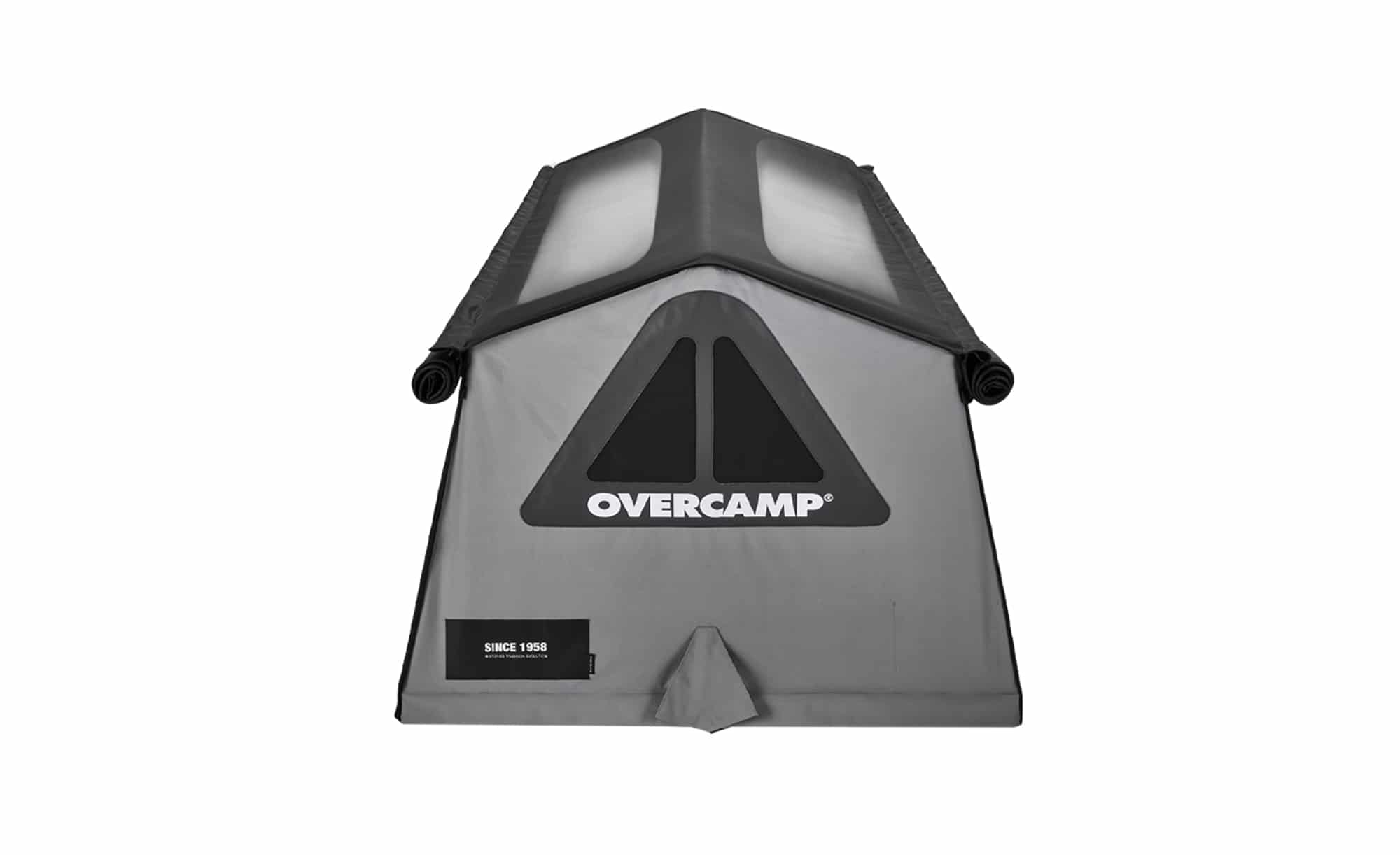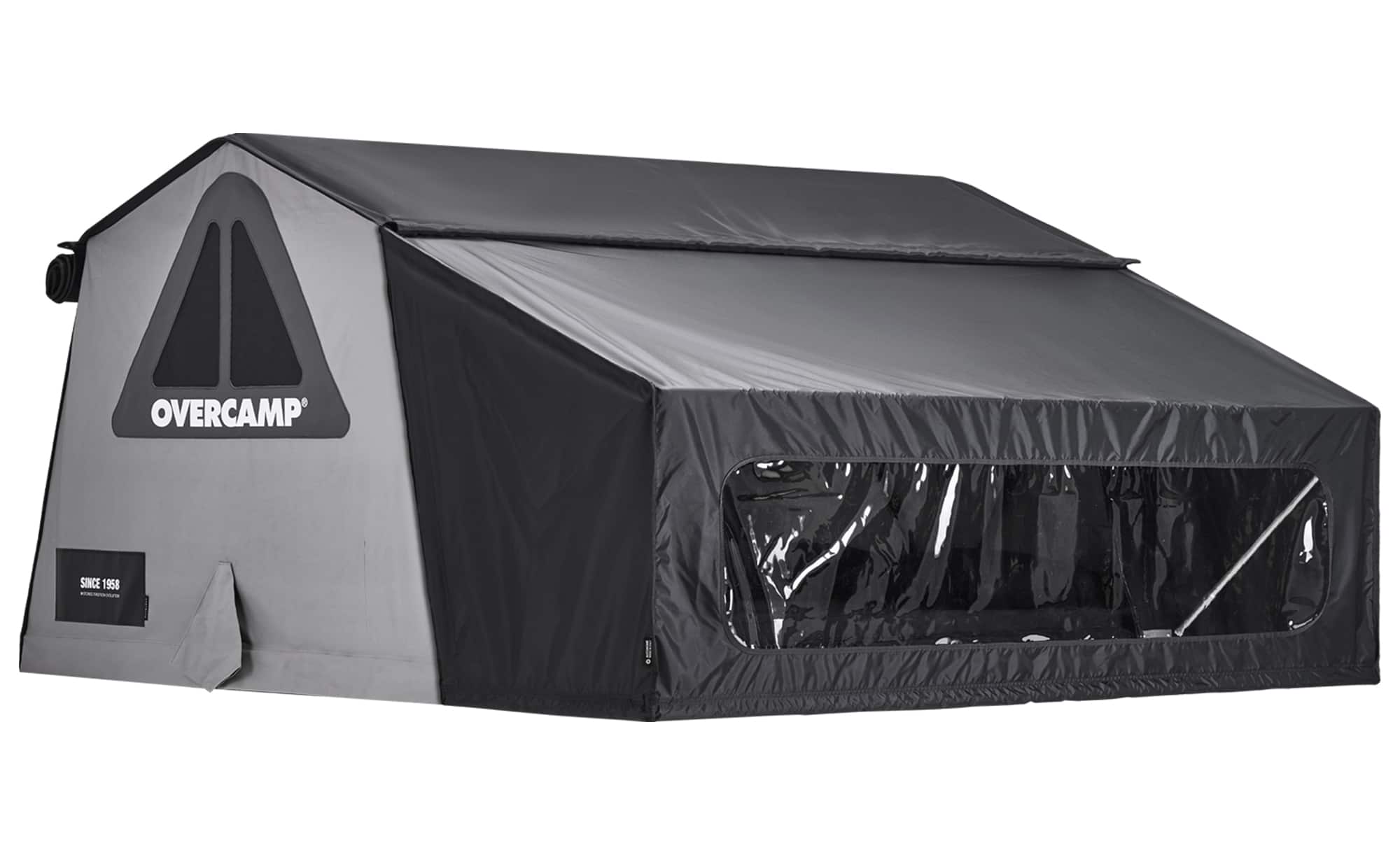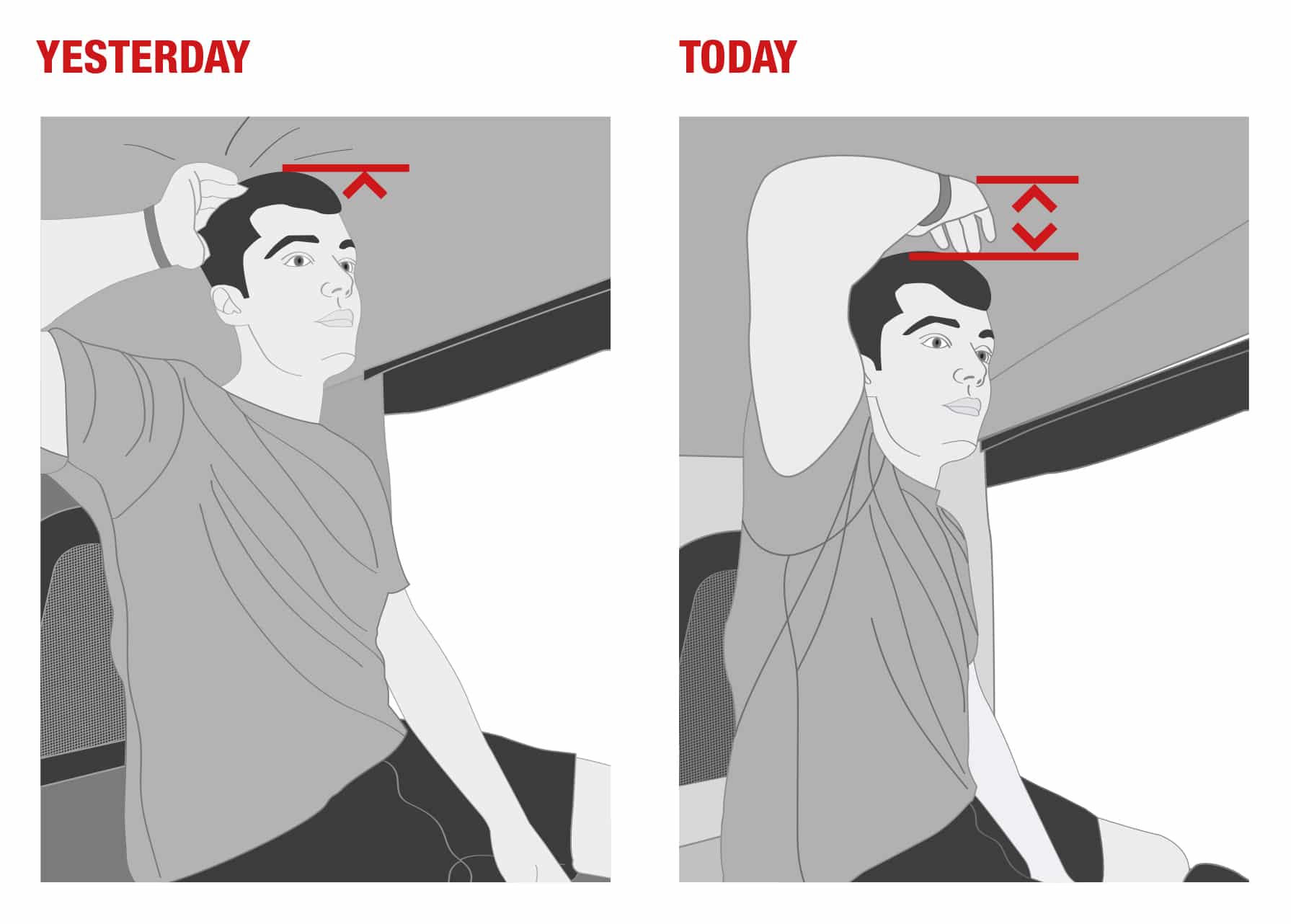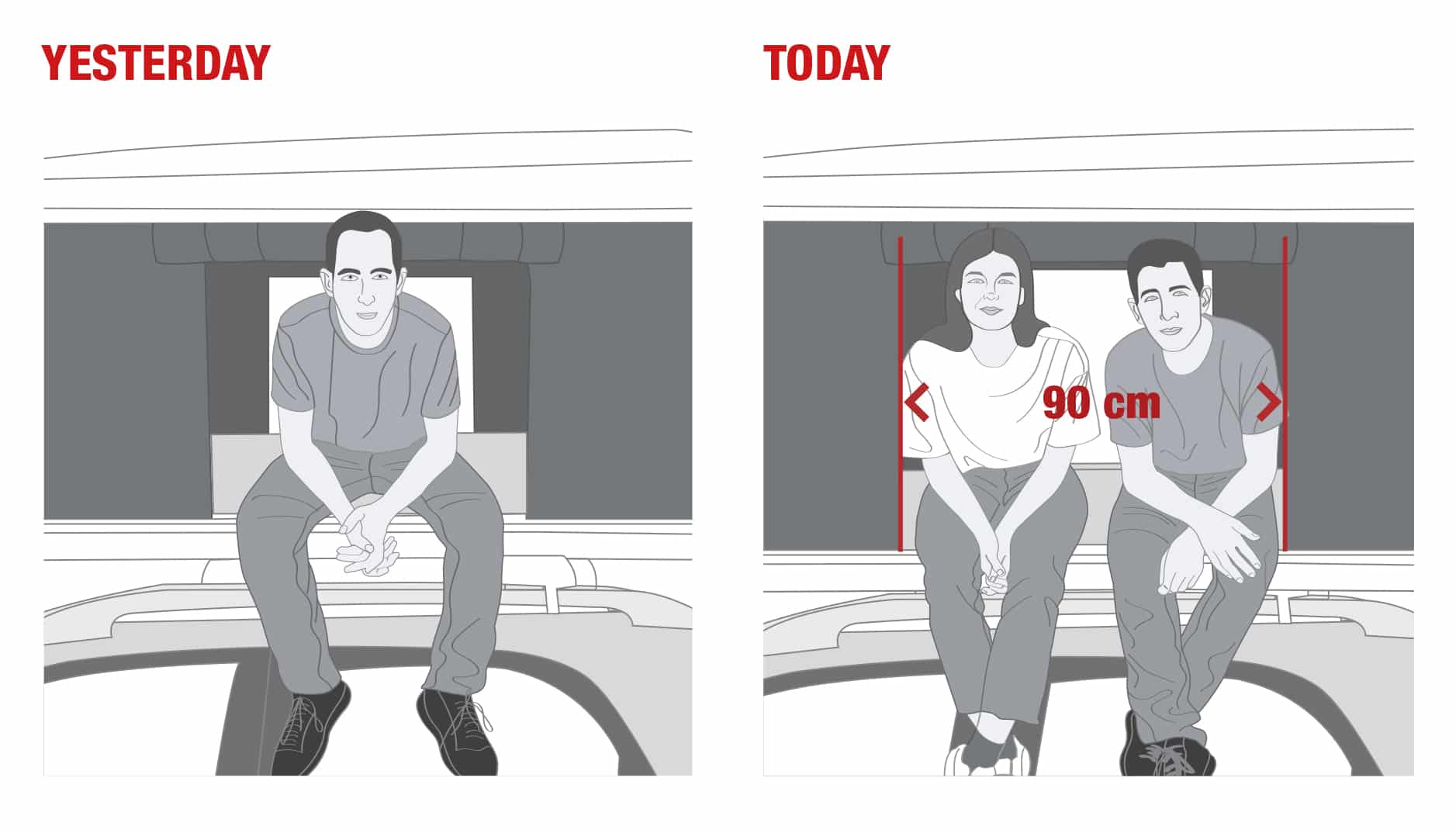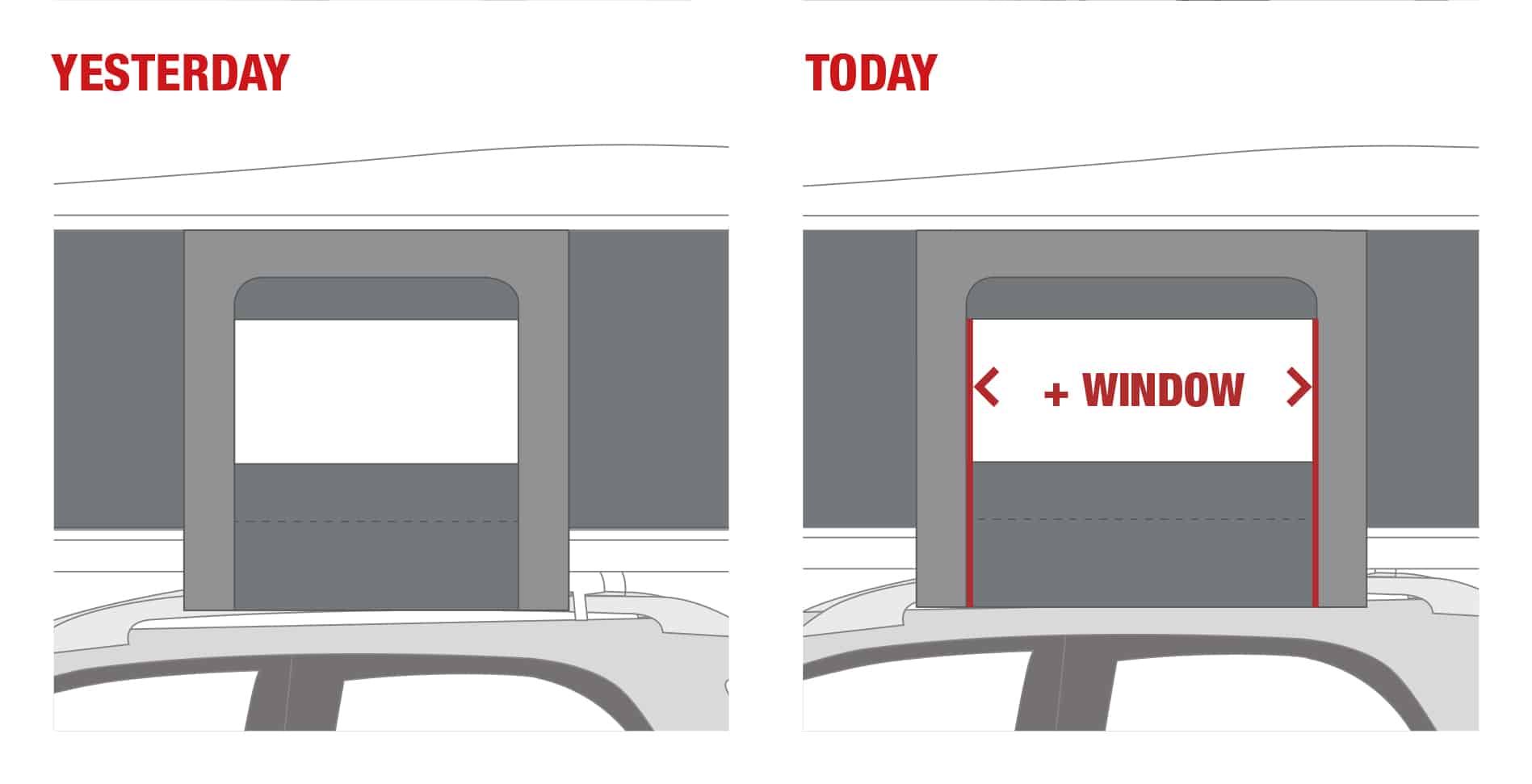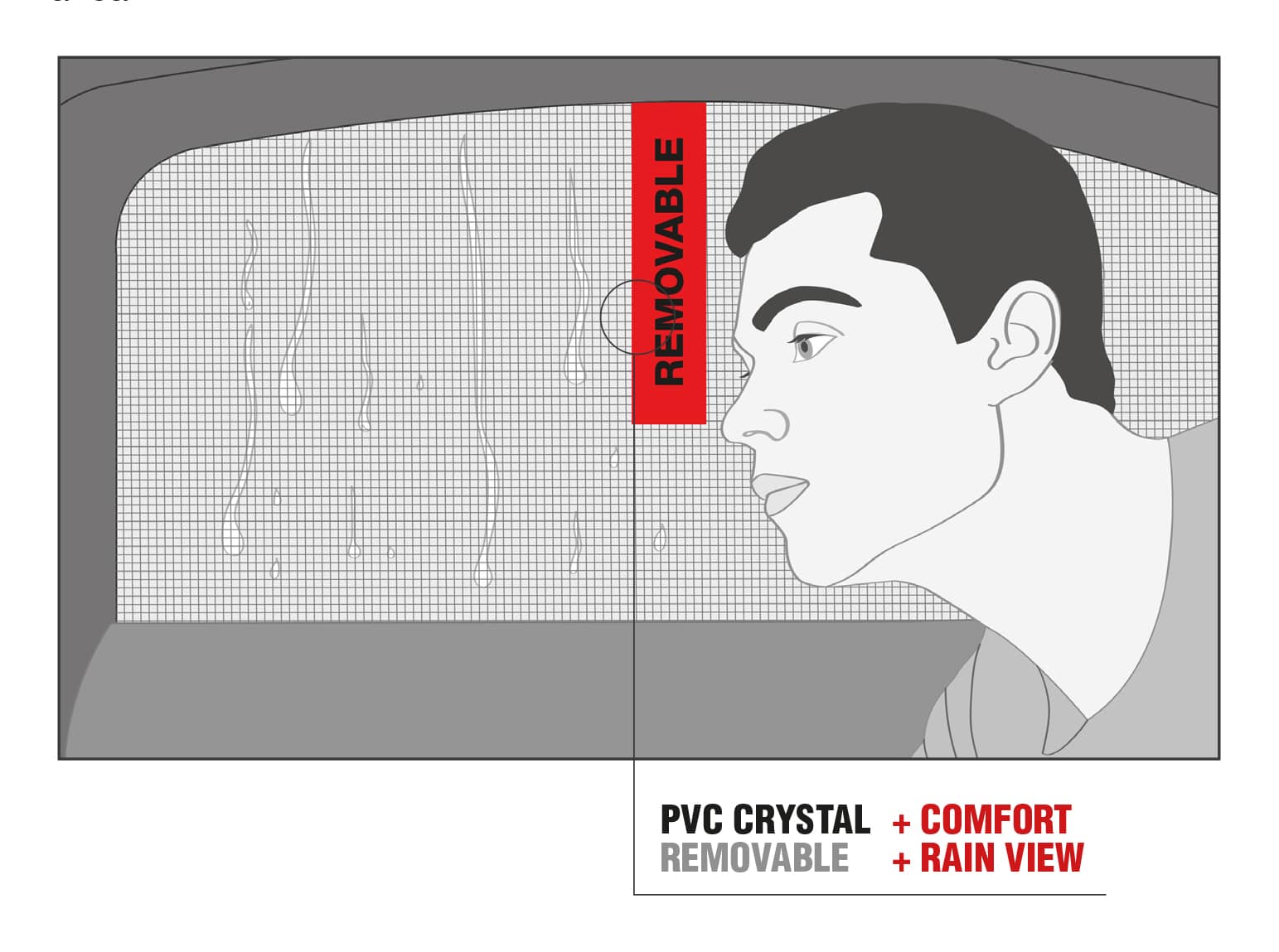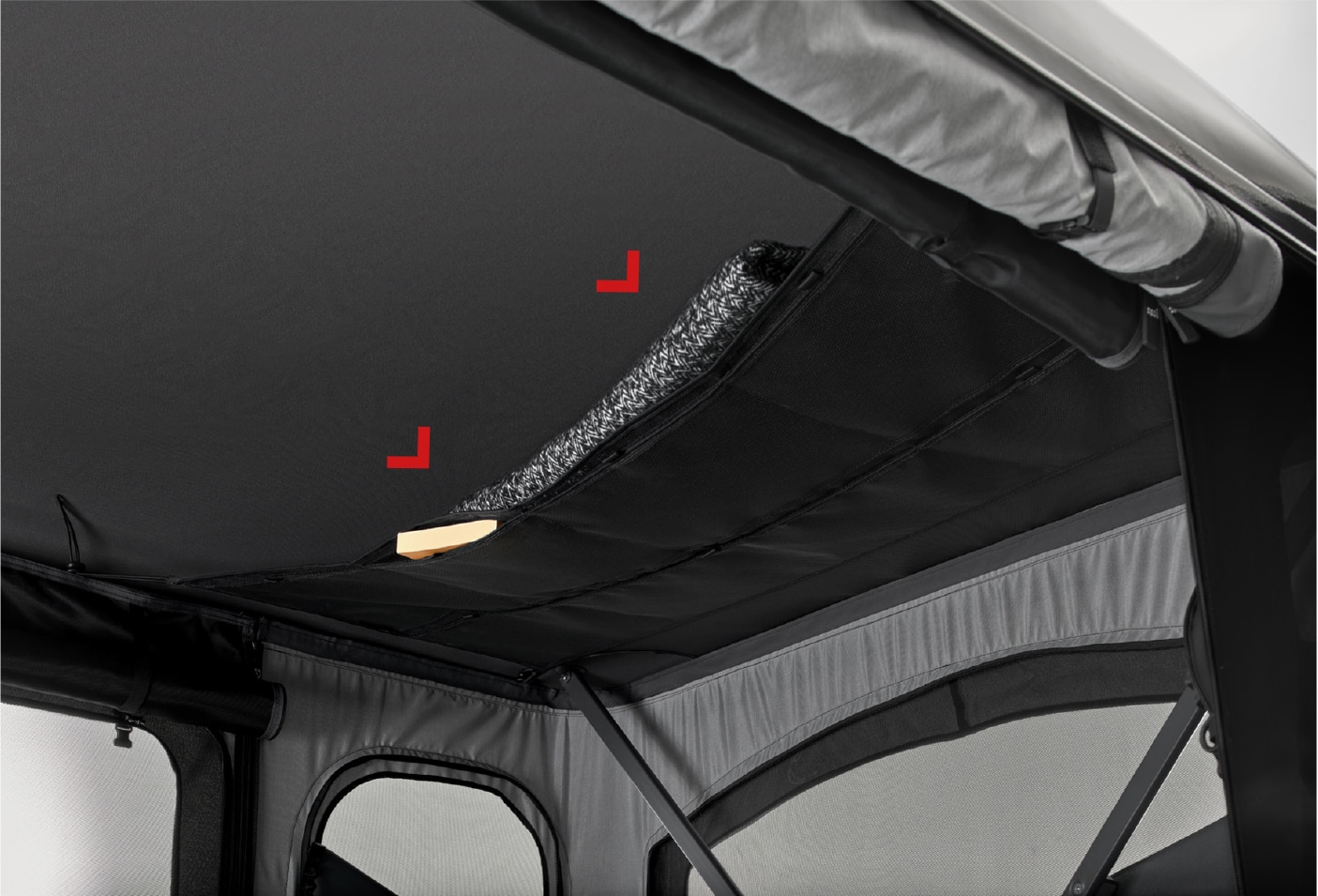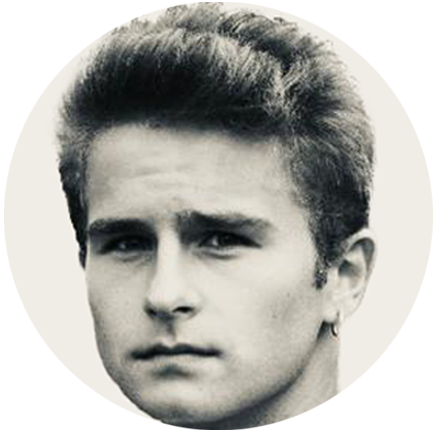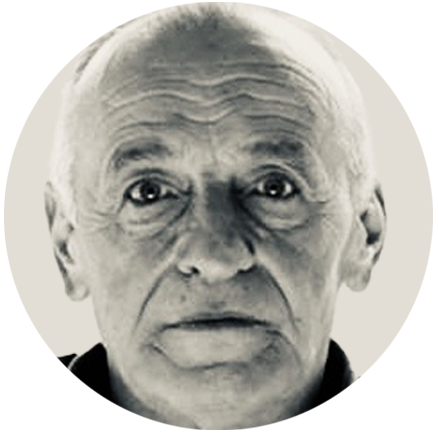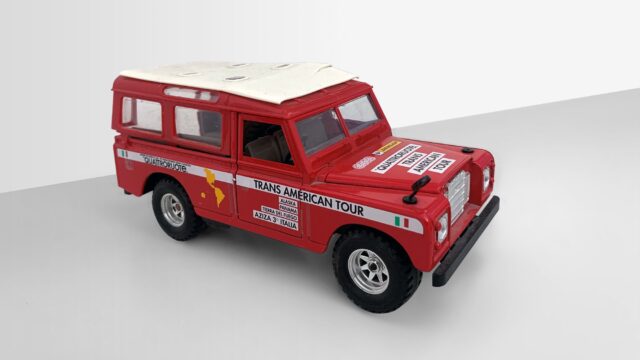GIUSEPPE FERCODINI
INTERVIEW
By Eugenio Martignani
Roof tents: which one to choose?
An interesting conversation with Giuseppe Fercodini, founder and owner of Autohome.
The main principles of a mythical product that became the symbol of the journey in freedom and its guide to the purchase of the right tent.
Who is Giuseppe Fercodini, a life dedicated to roof tents?
Only by knowing the character can we understand the philosophy that led him to create a product that has become a status symbol and synonymous with adventure.
I have recently turned 60 and I can safely say that much of my life was devoted to knowing, improving and promoting our product "roof tents”. Over the years, my brother Giacomo and I, with the Autohome brand, always aimed at making us understand first of all what quality means in our sector. A commitment which we still consider to be a priority today. Indeed, today perhaps even more than once! We were pioneers in our field and we had in mind, since we designed the legendary Maggiolina, that quality, which then means practicality, livability and durability of the product, should be our must have. We built our market positioning on these principles. That require honesty and transparency. Because quality is a concept that goes beyond brands. The same applies to Autohome. I still consider myself a "craftsman-entrepreneur”. I am not a trader, let alone an accountant or importer of products that come from abroad. I'm just a perfectionist, that's what they say about me! I think I am a person who loves beauty and beautiful things, created by man and nature. I have two passions that I believe in: freedom and travel. Each tent has its own soul, a story to tell. Our job is to help people achieve this goal: to travel freely. I don't even know exactly how many models and combinations we have in Autohome, between sizes and colours we may exceed 100 variations. If Autohome did and continues to do the history of roof tents, it is because since 1958 it has always been consistent with these principles.
Why does the roof tent like more and more and what is its charm?
First of all, it is a choice of independence, which opens up prospects that other ways of travelling cannot offer. Whatever the type of trip, discovery, adventure, relaxation, from the big stage raid to the short weekend, the roof tent can be quick and easy, transforming the vehicle into a house in a few seconds, wherever you are. The real roof tents, and I emphasize true, are stable and safe in the wind, they do not undergo installation constraints. They always allow a comfortable accommodation in the front row: by the sea, the lake, the river, in the pine forest... however in direct contact with nature.
What is the most requested and preferred tent by users today?
Take our offer as an example: Autohome shell tents are exported to more than 40 countries and account for 70% of sales; the remaining 30% is for fabric tents. Only a few years ago the sales quotas were the exact opposite. Why this reversal of trend? Because only a few years ago, "pure and hard" adventurers, Saharans included, who were prone to folding fabric tents, prevailed.
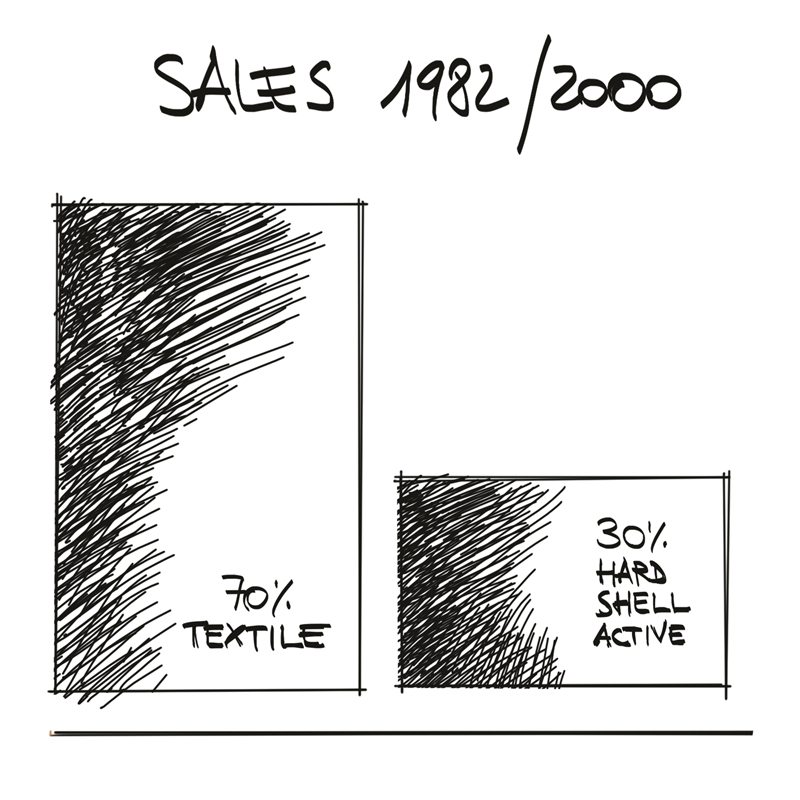
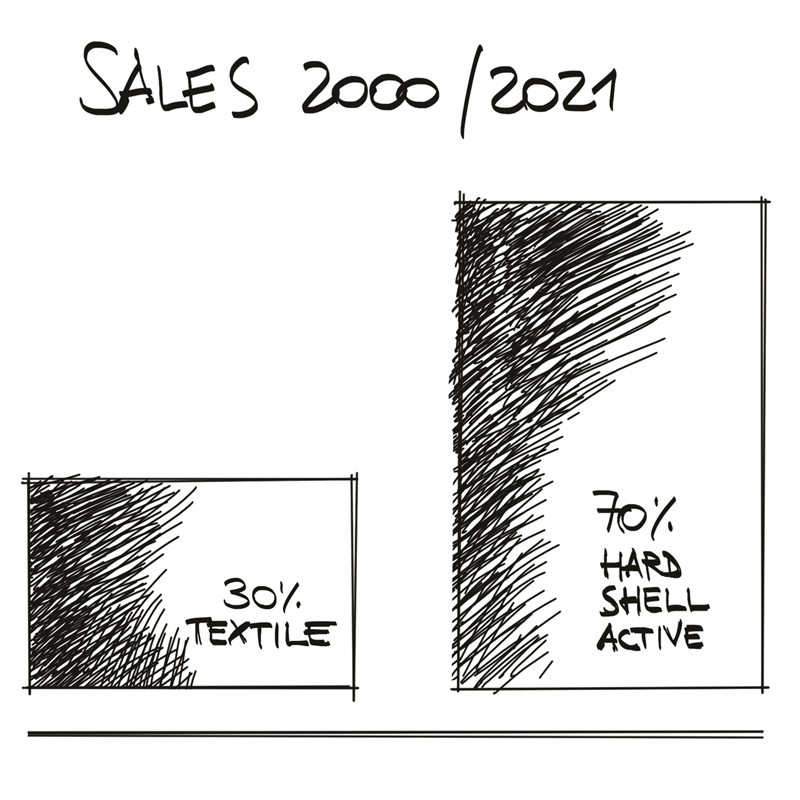
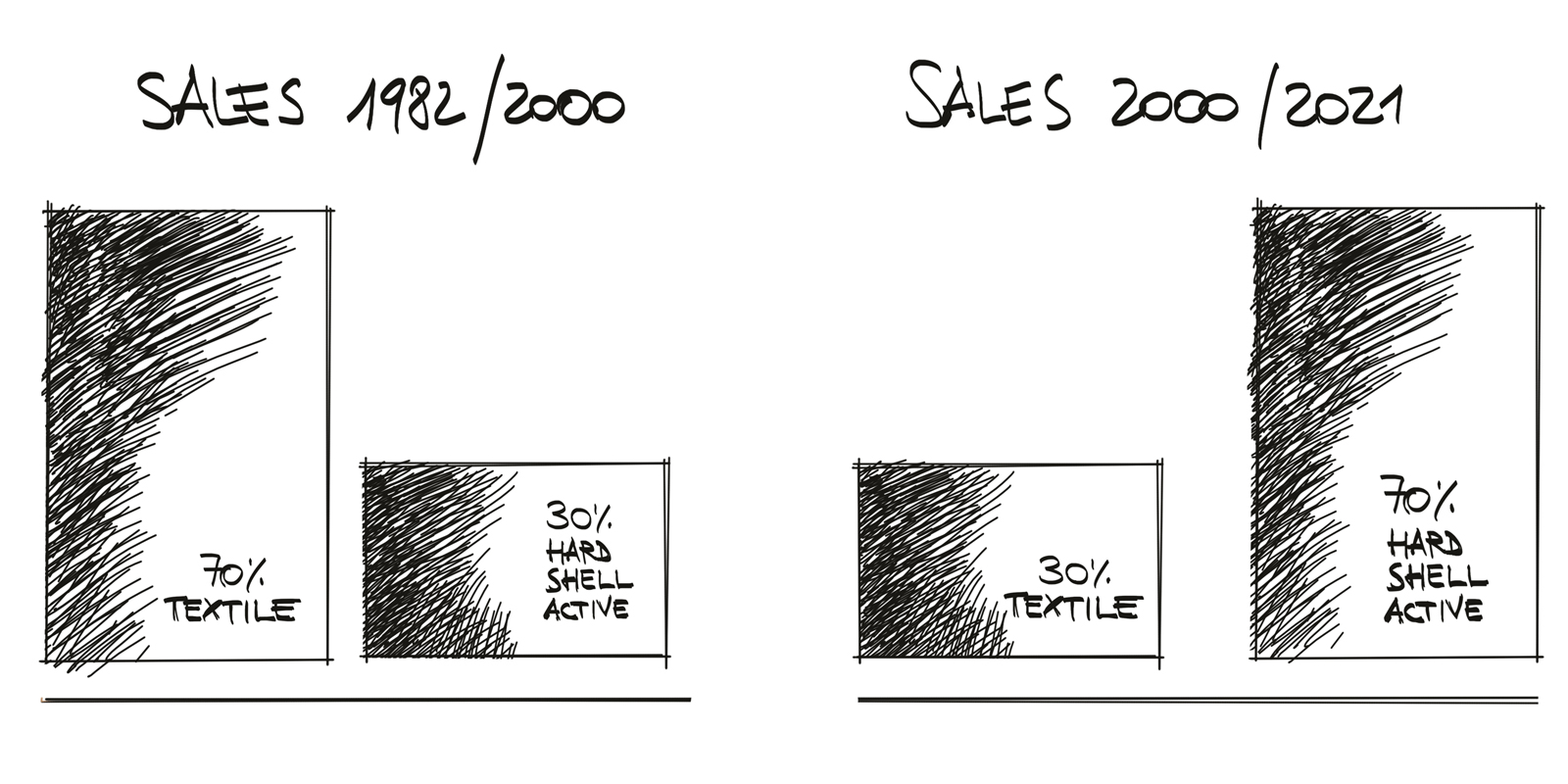
Africa and the desert were their main destinations, ideal destinations for explorers and travellers. We are talking about tents intended mainly for large 4x4-Off Road vehicles. It can rightly be said that the success that became planetary of roof tents began with the legendary Land Rover 109, thanks to the memorable feats of the legendary Nino Cirani, still today an icon of adventure for fans.
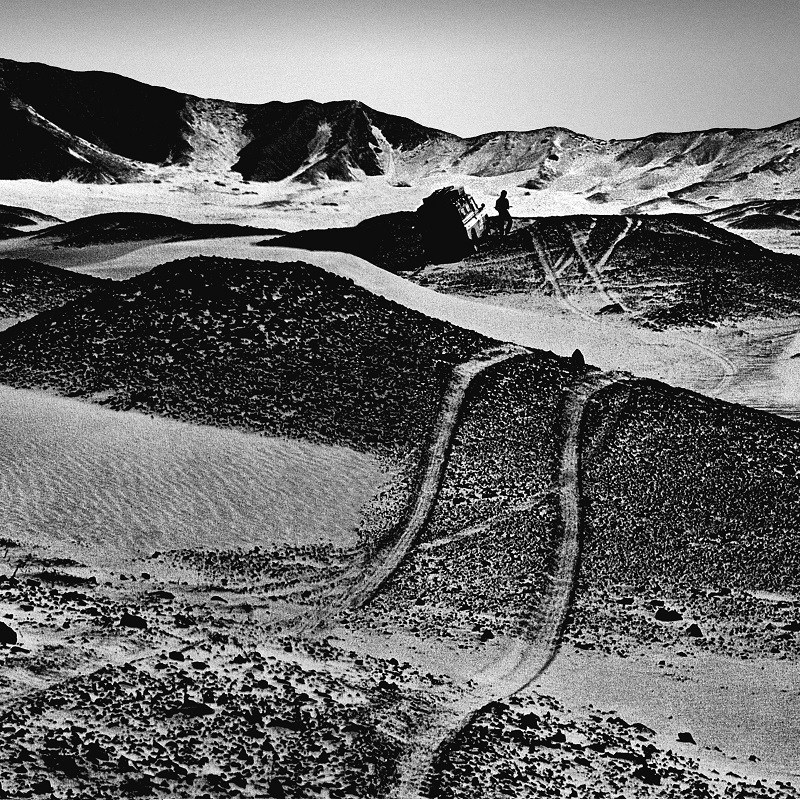
Above the Peruvian desert. Image by Nino Cirani, published in the book "Il raid automobilistico”, editorial Domus.
The main reason for choosing the fabric tent was that it occupies half the roof of the off-road vehicle, thus leaving the other half in space to carry tanks, spare tires and travel equipment. This was the main choice in the Off Road world that distinguished the market. But that is no longer the case today. The tent with a shell roof has taken over. There are those who say: but it costs more. I am convinced that in our sector the priorities go to other aspects, at least for those who really love free travel. I remember a traveling friend who said, “... you go to a good restaurant and eat very well, you will remember what you ate and not the bill”.
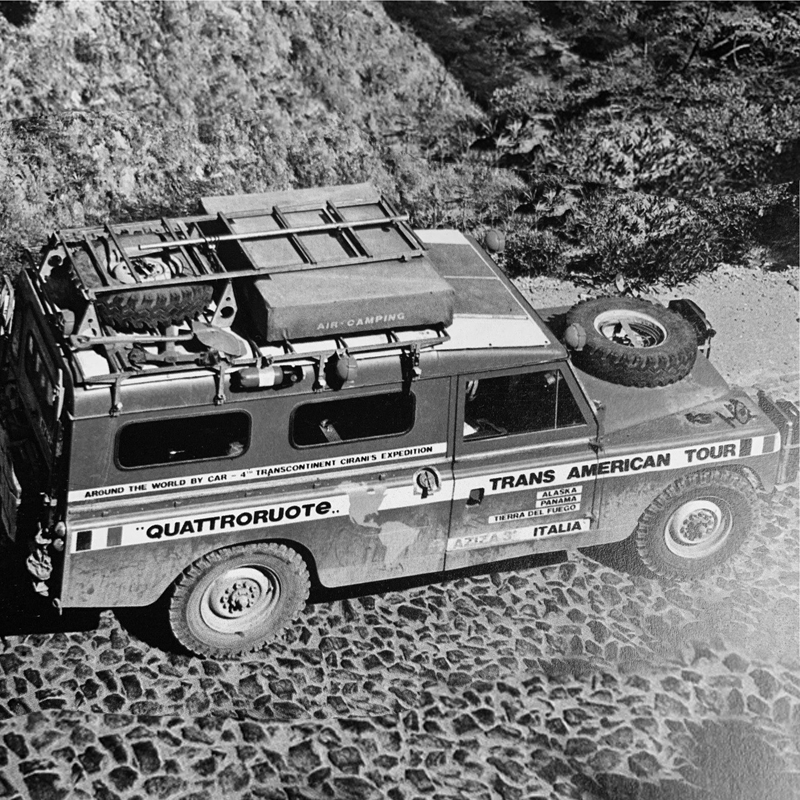
This is Nino Cirani's share 3 - Land Rover 109.
It should be noted that the tent occupies half the roof of the vehicle, thus leaving space to carry spare tyre and other travel equipment.
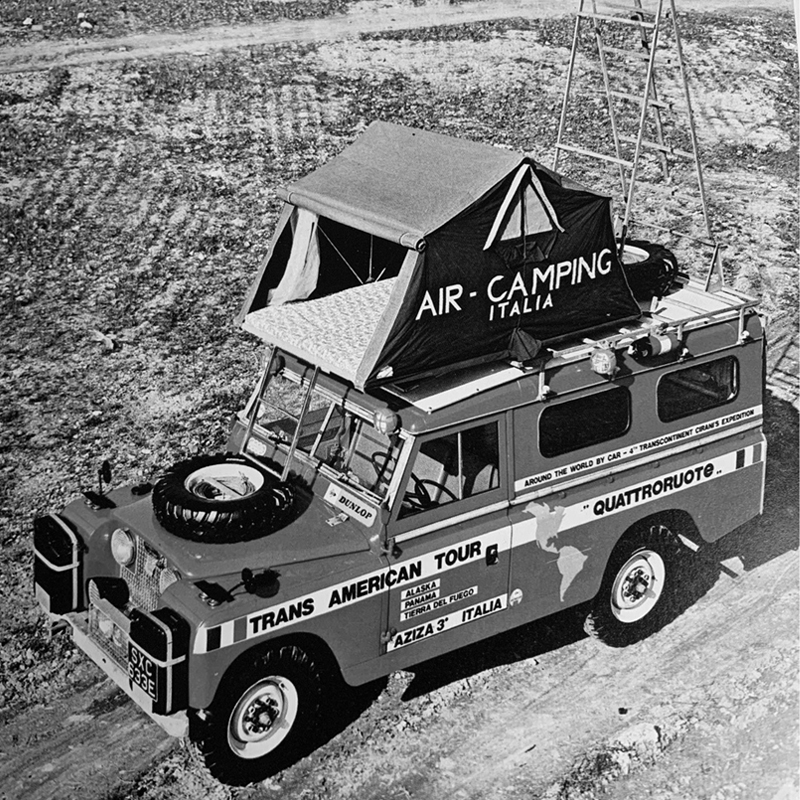
Assembly of the tent in the Nino Cirani’ style.
The open tent does not come out of the shape of the car, which means that it is possible to camp wherever you are.
Let's first talk about the traditional fabric tent. What are the strengths and weaknesses, and on which particulars to focus your attention to make the right purchase?
The fabric tents are essentially very compact when closed, and become well habitable when open. But be careful though: they open with a cantilevered platform and then come out of the shape of the car.
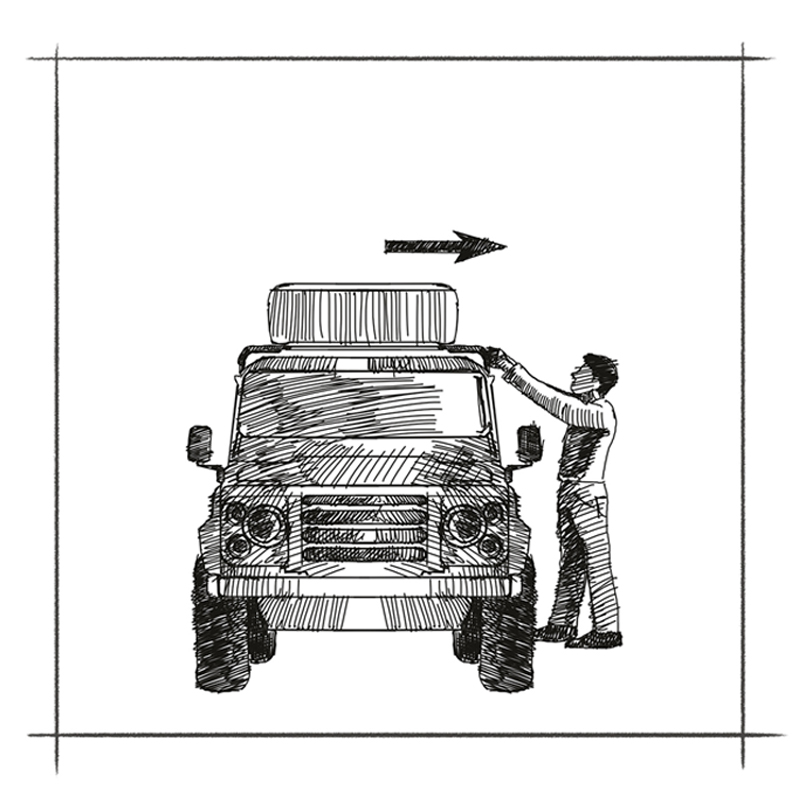
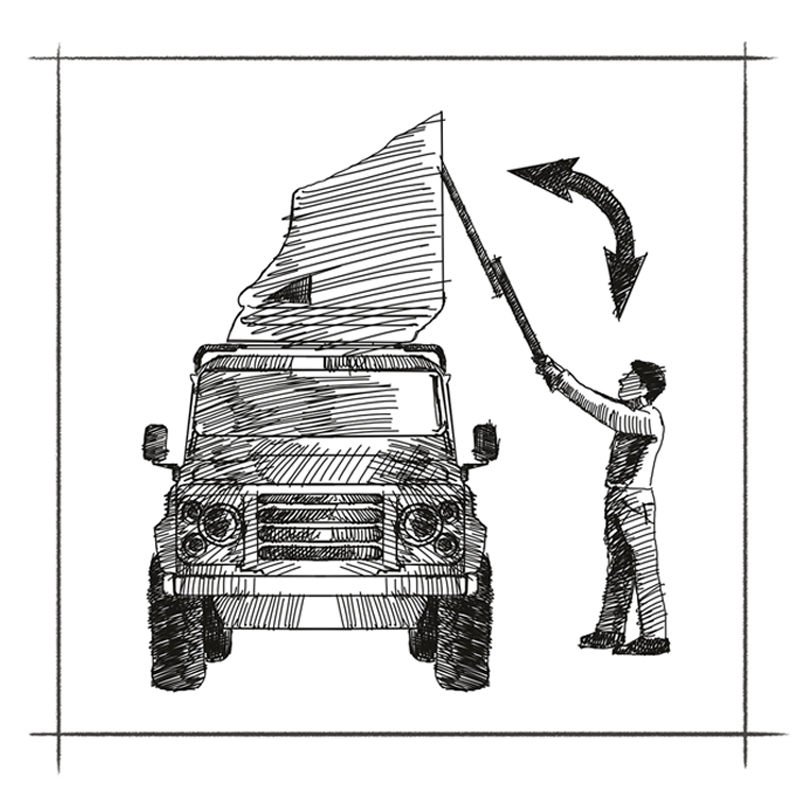
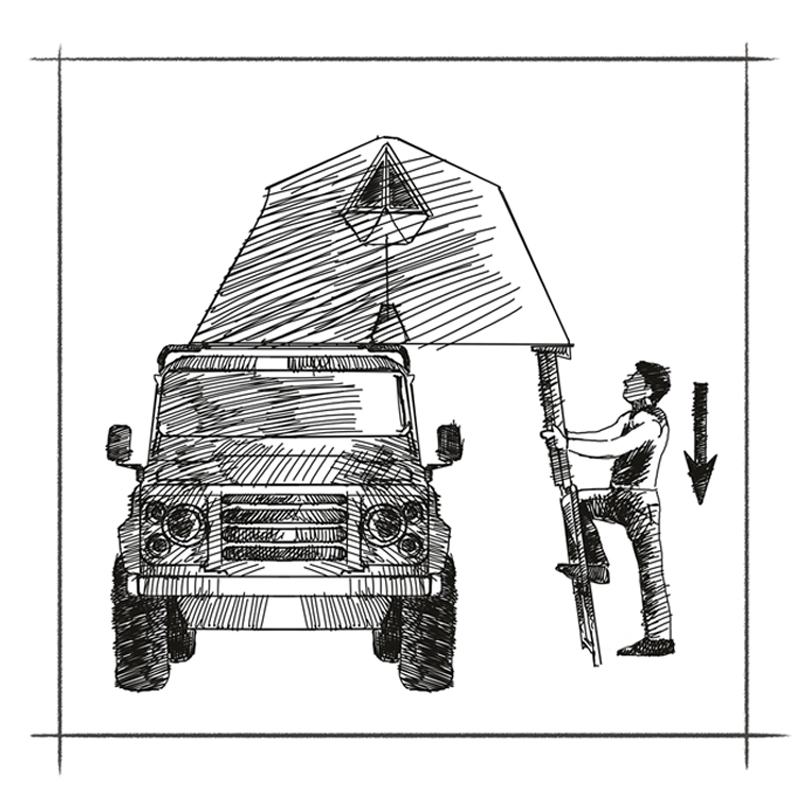
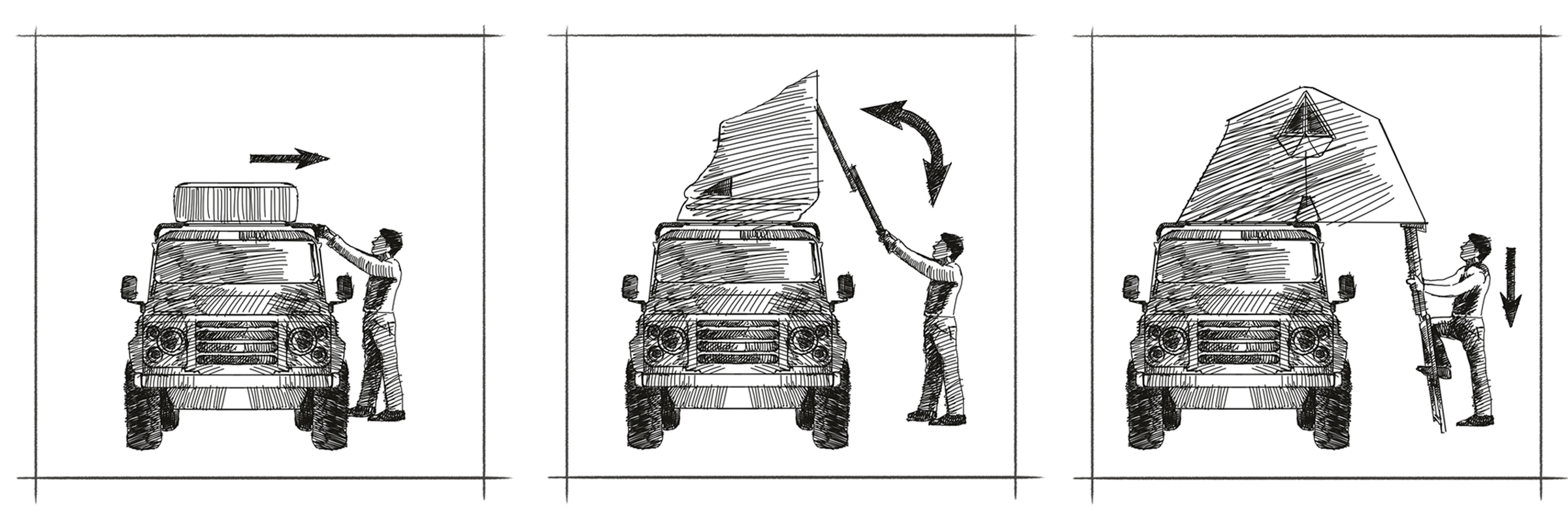
Let's see some aspects not to be underestimated.
The first point is the ladder: it should not be considered as an element to be kept detached from the tent and stored in the trunk of the car, that is to say, to be hooked whenever the tent is opened. Conceptually the ladder is a structural and load-bearing element of the tent in all respects. So I recommend checking that the ladder is integrated.
Second point: materials and structure of the platform. Autohome fabric tents have waterproof and water-repellent hardwood base with high elasticity, thus ensuring reliability and durability. Quality guarantees very different from tents of Asian origin that have floors in... coated polystyrene! So, before each purchase, check this item very well.
Third point: windows. That they must be perfectly integrated and not have protruding structures, because let's not forget that we are high from the ground. Personally I hate any stakes to match the windows as well as you can notice in low quality competitors product. Another aspect that I do not share in those tents are the windows on the roof, because they can easily become a source of rainwater infiltration risks. Over time it can prove to be a very serious problem. And then pay attention to the wind: a tent about two meters from the ground cannot have accessory, such as canopies and so on. The tent must be a single body, the roof must necessarily be integral with the walls. If you do not control these aspects in the purchase, there is a risk from the first use... of taking flight and going to hang gliding! Not to mention the sailing effect of fabrics: in many parking places the wind is a constant, which can create instability and noise, causing sleepless nights.
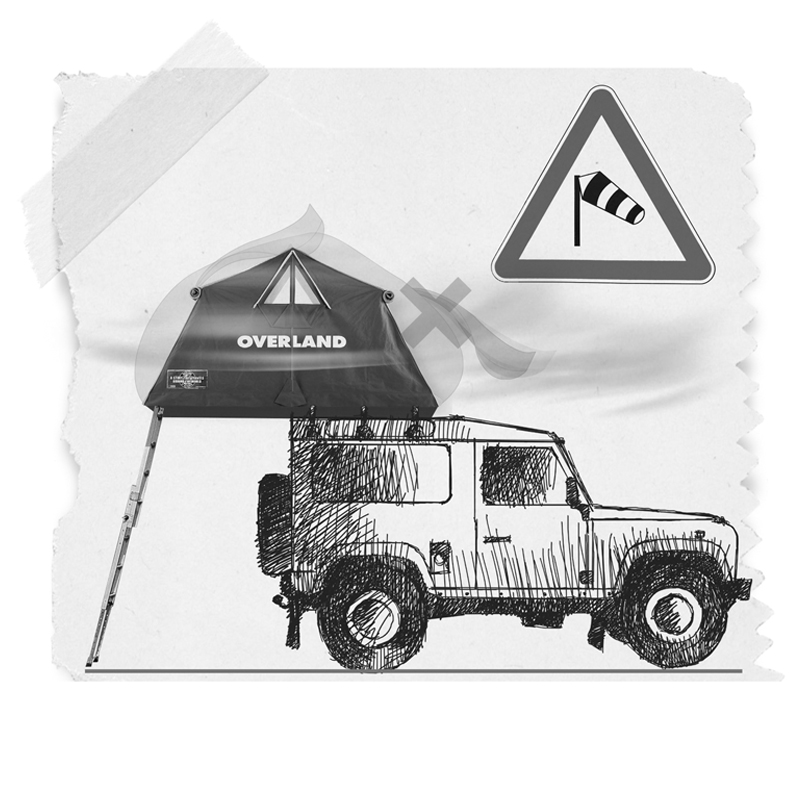 An Autohome range tent is represented here.
An Autohome range tent is represented here.
A real windproof roof top tent. A serious, original and grand design project that does not generate turbulence and noise, much less "the sail effect" or "the ball effect" that are avoided.
In Autohome we have always known these problems and we solve them on our fabric tents with fabrics and designs that are the result of the experience of many years of activity. One day, an authoritative off-road character said, "You are Italian and you like cooking, so you know how to dose the ingredients to make a good dish." This joke has stuck with me, I still treasure it today and I apply it to my tents that must be made of heavy fabric, this is the first ingredient.
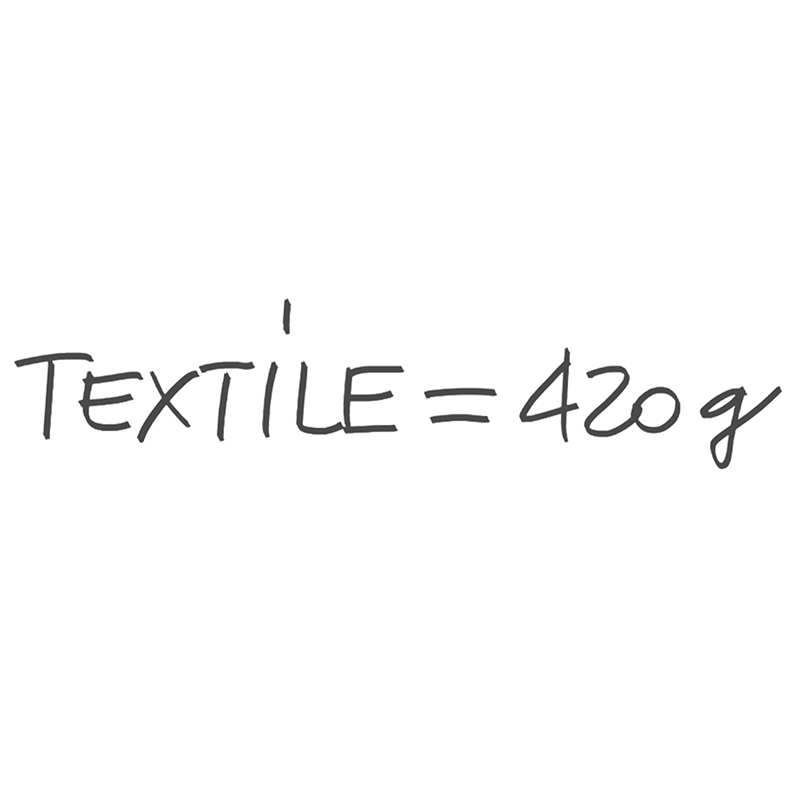
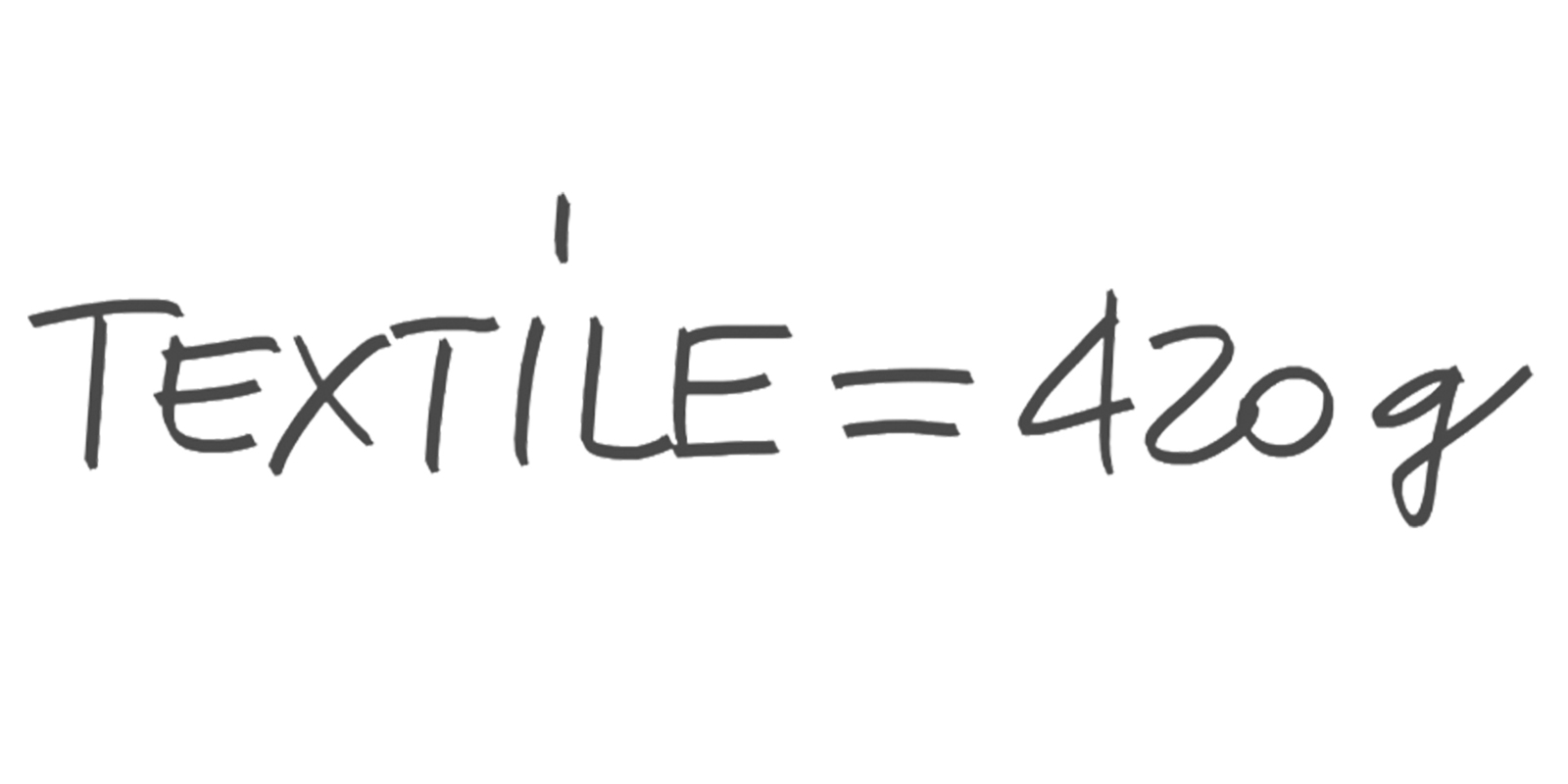
The second ingredient is that they must be simple and have little protruding fabric that generates sailing effect. It is usually preferable to stay in a private area or camping with a fabric tent. This is at least the law in force. The tent does not fit in the shape of the car, it comes out of the mirrors and therefore it is believed to occupy public land. They are therefore bound by the rules on the occupation of public land, a fundamental difference compared to the rigid roof tents, which are kept in shape. To recap: the great advantages are habitability and comfort. The most obvious problem is to have overnight limits in public areas.
Well, now let's consider the hard-shell tent. What are its strengths and how to choose it?
I believe that today these tents really have something more than fabric tents. In particular, it is the roof that makes the difference. Having a roof made of rigid and suitable materials means having a more insulated environment: you are more insulated from the heat and cold, more protected from every point of view. It is no coincidence that experts call them ACTIVE HARD SHELLS, that is, TENTS WITH AN ACTIVE ROOF.
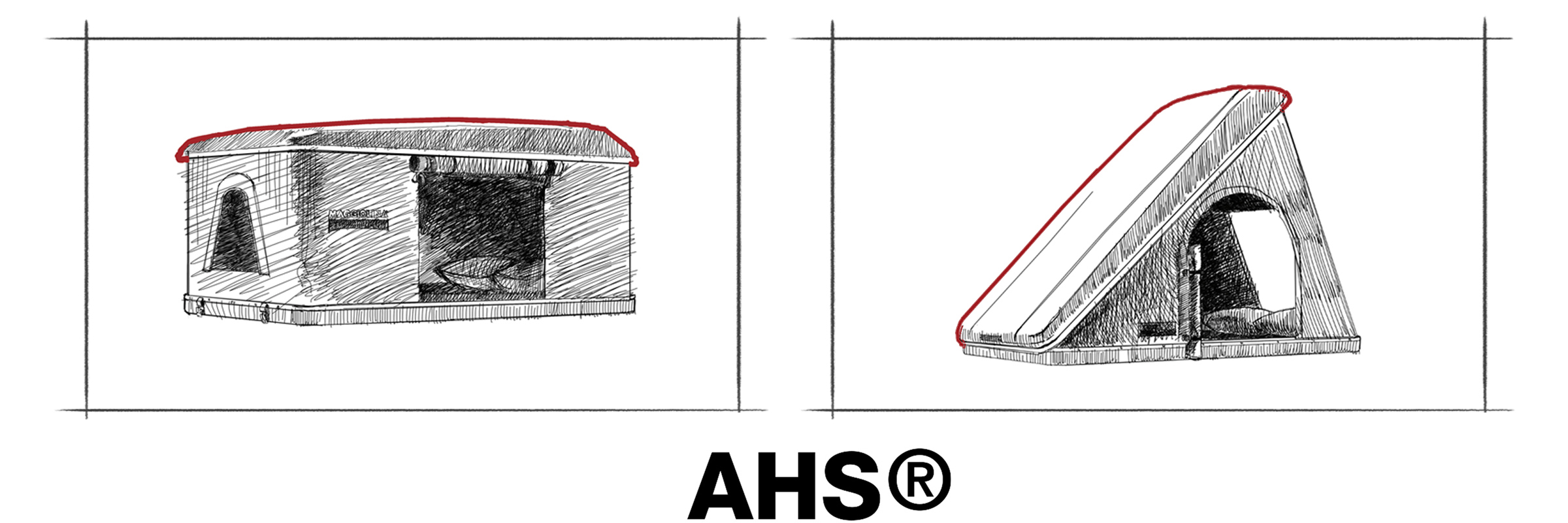

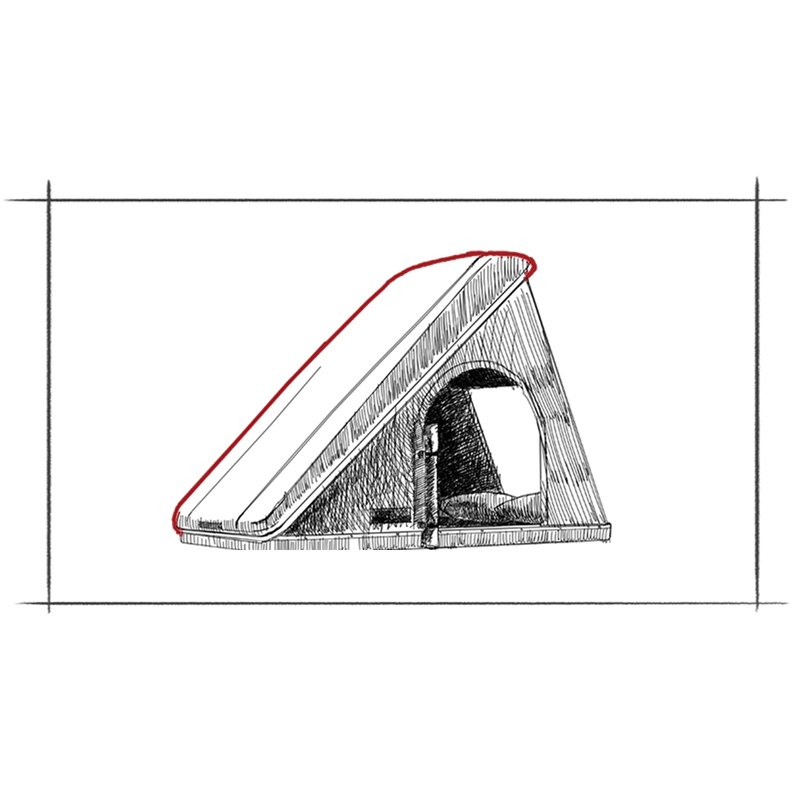
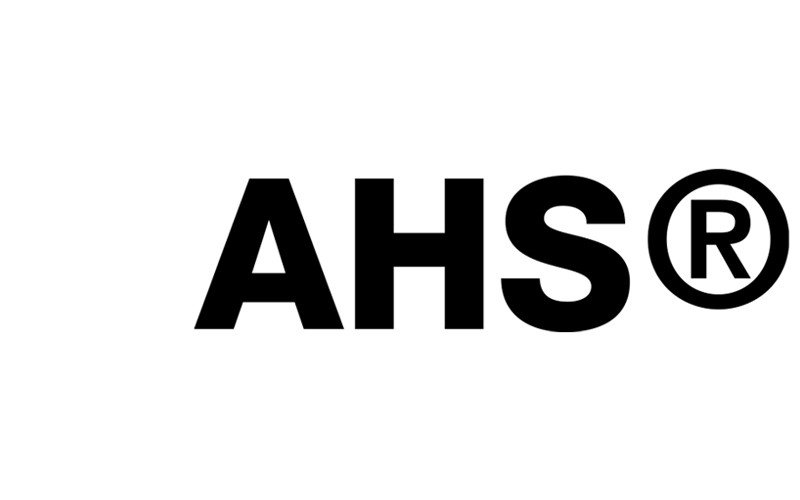
INSULATED ROOF
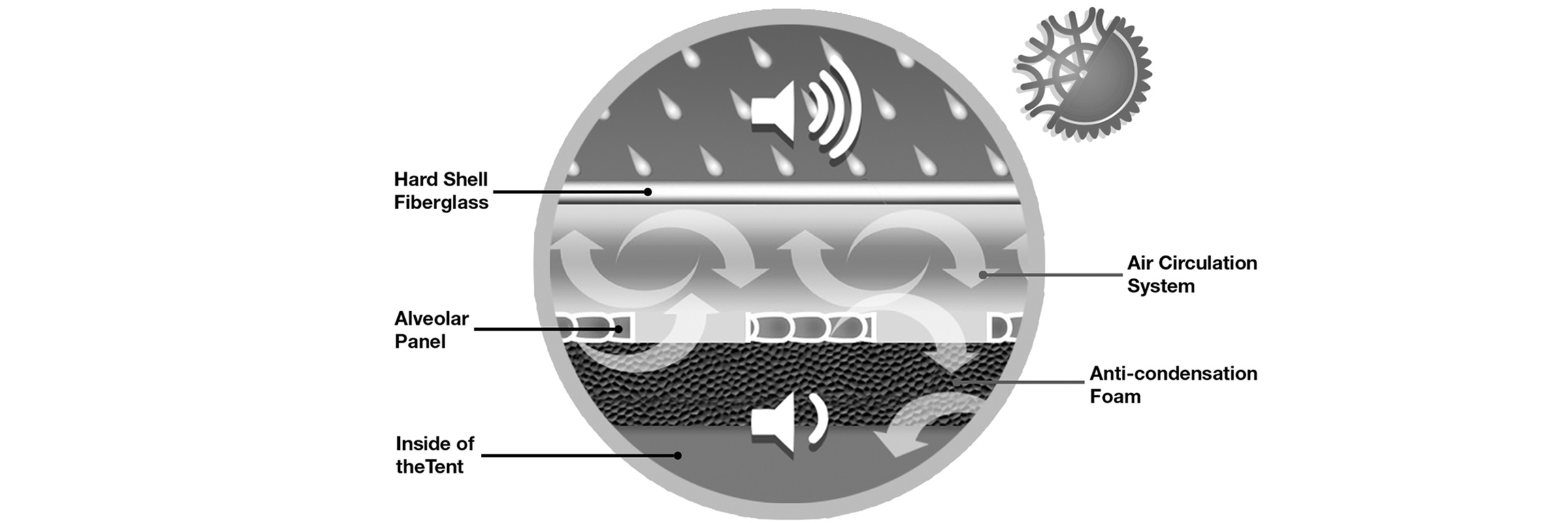
In fact, they have a little less internal habitability than fabric tents, but just choose a tent of the right size and the spaces become ideal. It must be considered that the shell tents are more compact and more stable than those in fabric, especially in the case of storms. They completely prevent infiltration. Welded fabrics, double sheets and PVC cannot compete with a rigid roof, among other things made of fiberglass which is also equipped with an internal insulating membrane. So, to sum up, I would say that the main advantages of shell tents are: an extraordinary stability without sacrificing the speed of opening and closing; to this is added the fact that the mattress is slightly higher and does not fold as for fabric tents. It is a single piece and has not been spliced. In addition, shell tents have no limits in deciding the location of overnight stays in public areas, because the tent and the ladder fall within the shape of the car.
The disadvantage, if we can define it that way, is only one: a higher cost of purchase than the fabric tents. But I strongly invite you to consider what they can guarantee over time in terms of comfort and safety, especially in adverse weather conditions.
Let's go into the specifics of materials and talk about fabrics. What is the best material and how to recognize it? 


It is a decisive choice in a tent, it naturally affects its quality and costs. Everything is on the market: more or less heavy, breathable, waterproof fabrics. In detail, it ranges from fabric with high impermeability or watertightness such as PVC, to lightweight nylon such as in Igloo tents, to coated, resined, synthetic, acrylic, eco-friendly fabric, natural cotton and mixed fabrics. Autohome does not trust products from markets outside Europe, and this is because quality is too variable. Our purchasing department is particularly attentive to this issue. In summary: for fabrics, as for yarn for stitching and also for mosquito nets we turn to Made in Germany suppliers of great seriousness and specialist expertise. I think it is essential to use the most breathable fabric possible or, in any case, a the fabric that best transmits heat and condensation to the outside, obviously it must be waterproof. A perfectly breathable fabric is certainly more expensive, but it is what allows you to get a cooler and healthier environment. Autohome tents have a high degree of breathability and optimal heat transmission to the outside. That's why they don't need to use fans, vacuum cleaners or extractors to spin the air. Next to the fabric, packaging and stitching must be considered. We always try to avoid them at critical points. On this subject, I say that I have little confidence in the chemistry applied to fabrics: for example, hot tape adhesives do not satisfy me; sometimes with temperature changes they lose grip. In my opinion, better mechanical solutions or alternative packaging methods are better. The most exposed zips, in particular, must be of high quality standard. Ours, the tents most exposed to water, are all waterproof and above all “spiral”, to resist abuse and wear. As you can easily understand, in this case you need to check well before buying. Above all, do not be enchanted by certain prices offered by unknown brands or without a story, often present only on the Internet. The concept is almost trivial, but it is always important and must be remembered: even in our sector, nobody gives anything away and every decision has its price.
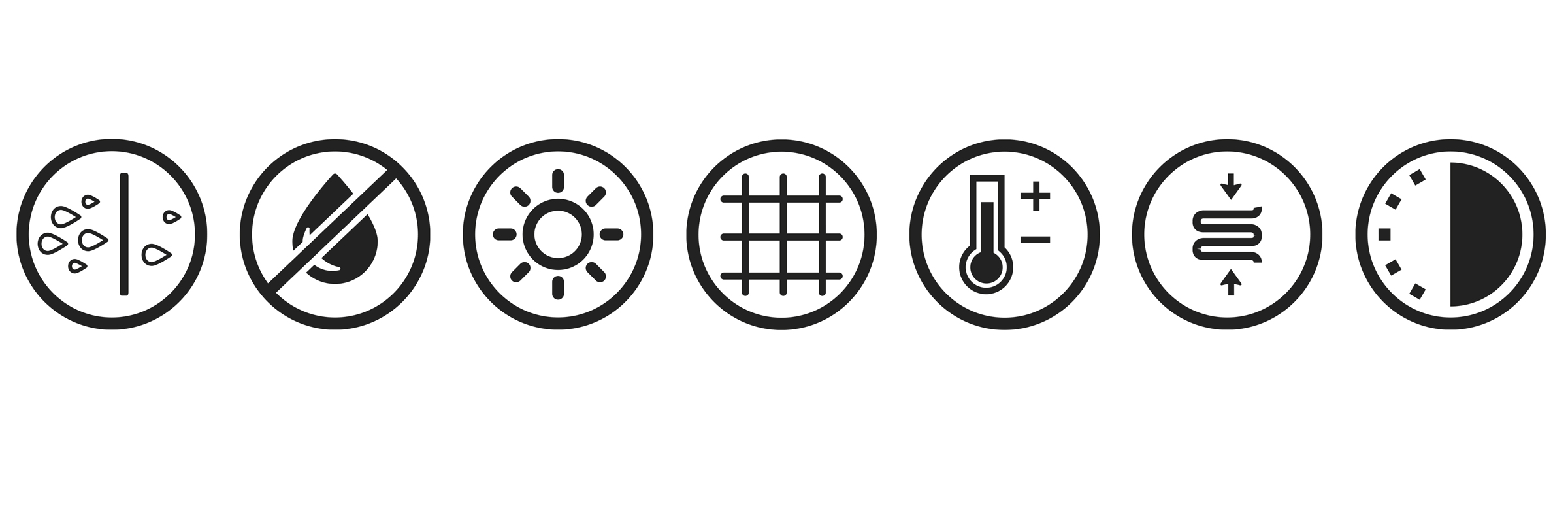
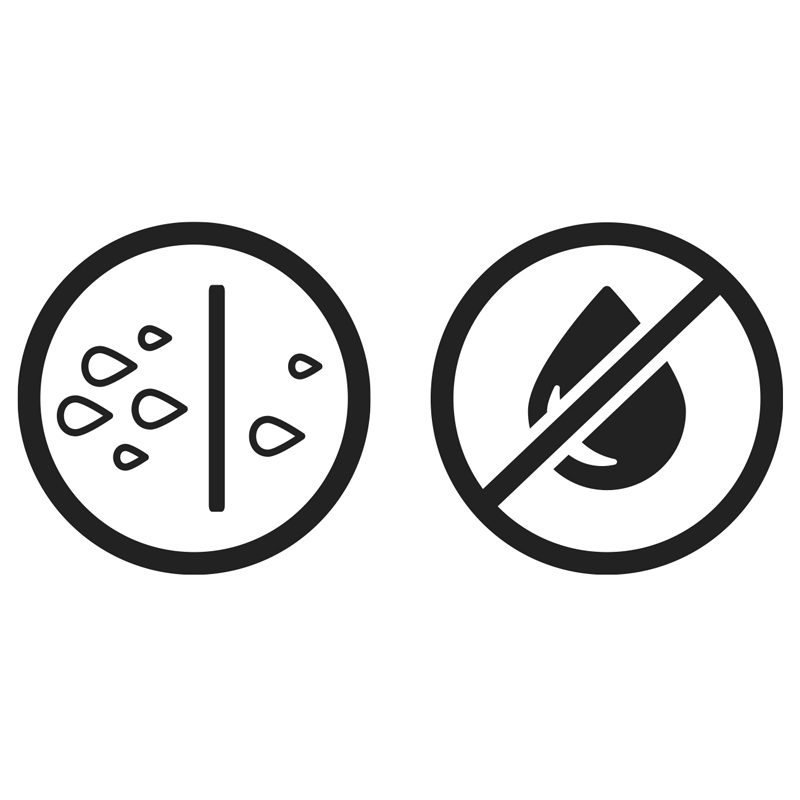
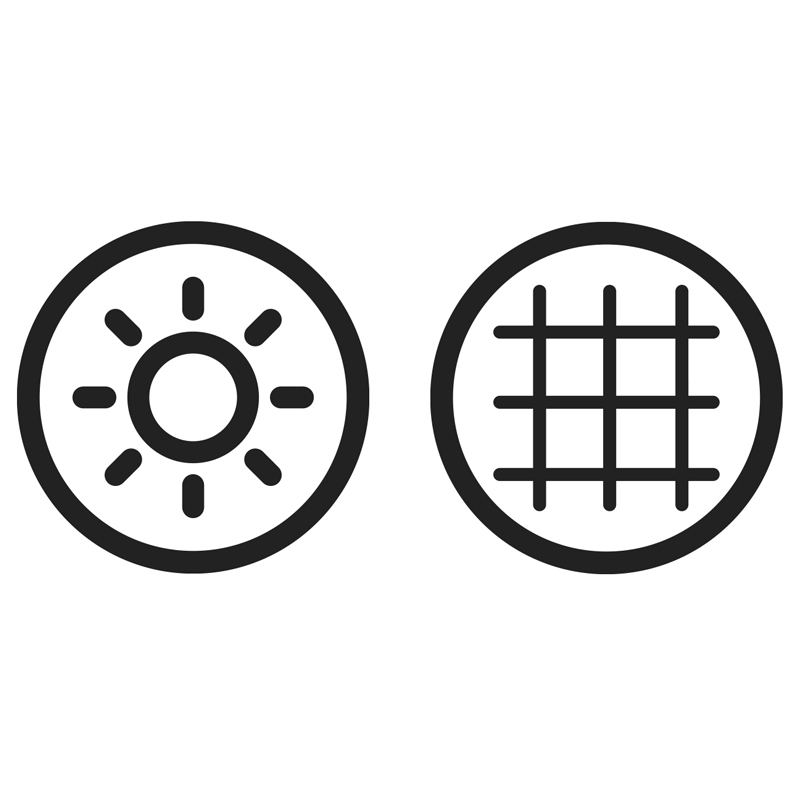


But an expert like you, Giuseppe, who has had the opportunity to thoroughly test and test all the tents in the Autohome range and knows their features well, which tent does he use personally?
When I was young, my first tent was the Maggiolina, which has always been my favourite. What memories! ... and that years of great enthusiasm and continuous discoveries... Initially I placed it on a Volkswagen Golf of 1982, then on a Passat Variant of the ’90s. I also used the mythical Air-Camping, but I did not have the right car to be in tune with what an extreme traveller did such as the great Nino Cirani, to be clear! Today that I am 60 years old, I use a Columbus shell with great joy. Exactly the X-long Land Rover model. This is because I want to be 100% safe and find myself in aesthetic harmony with my personal and timeless "Defender", year 2008. Also on this topic I would have a lot to tell... maybe next time, if you want.
GIUSEPPE FERCODINI
INTERVIEW
Roof tents: how to choose them?
A dialogue on the principles that characterize a mythical product of the journey in freedom, the roof tent, with the advice of Giuseppe Fercodini, founder and owner of Autohome.
Let's start by getting to know Giuseppe Fercodini first than the main product of our dialogue. Why have roof tents become an integral part of your life?
I recently turned 60 and I can safely say that much of my life was devoted to knowing, improving and promoting our product "roof tents”. Over the years, my brother Giacomo and I, with Autohome, always aimed at making people understand first of all what quality means in our sector. A commitment which we still consider to be a priority today. Indeed, today perhaps even more than once! We were pioneers in our field and we had in mind, since we designed the legendary Maggiolina, that quality, which then means practicality, livability and durability of the product, should be our must-haves. We built our market positioning on these principles. That require honesty and transparency. Because quality is a concept that goes beyond brands. The same applies to Autohome. There are elements that are essential. Either you adopt them or you don't adopt them. Period. Here's the difference. We apply them. But I say just as clearly: I am not aligned with one model or another, I have no particular preferences. I still consider myself a "craftsman-entrepreneur”. I am not a trader, let alone an accountant or importer of Asian products. I'm just a perfectionist, that's what they say about me! I think I am a person who loves beauty and beautiful things, created by man and nature. I have two passions that I believe in: freedom and travel. Each tent has its own soul, a story to tell. Our job is to help achieve this goal: to travel freely. I don't even know exactly how many models and combinations we have in Autohome, sizes and colors, maybe we exceed 100 variants. But I know that everyone is inspired by these values. If Autohome did and continues to do the history of roof tents, it is because since 1958 it has always been consistent with these principles.
What fascinated you in the roof tent product?
give. Whatever the type of trip, discovery, adventure, relaxation, from the big raid to stopovers to the short weekend, the roof tent can be fast and easy, transforming the vehicle into a home in seconds, wherever you are. The real roof tents, and I stress true, are stable and safe in the wind, do not undergo installation constraints. They always allow comfortable accommodation in the front row: by the sea, by the lake, by the river, in the pine forest... however in direct contact with nature.
What do users currently prefer?
Let me take our offer as an example: Autohome shell tents are exported to more than 40 countries and account for 70% of sales; the remaining 30% belongs to fabric tents. Only a few years ago the sales division was exactly the opposite. Because fabric tents are the origin of the product. Even just a few years ago, "pure and hard” adventurers stood out, including Saharans, prone to folding fabric tents.


Africa and the desert were the main destinations, ideal destinations for explorers and travellers. We are talking about tents intended mainly for large 4x4-Off Road vehicles. It can rightly be said that the global success of roof tents began with the legendary Land Rover Defender 110, thanks to the memorable exploits of the legendary Nino Cirani, still an icon of adventure for enthusiasts today.

Above the Peruvian desert. Image by Nino Cirani, published in the book "Il raid automobilistico”, editorial Domus.
The main reason for choosing the fabric tent was that it occupies half the roof of the off-road vehicle, thus leaving the other half in space to carry tanks, spare tires and travel equipment. This was the main choice in the Off Road world that distinguished the market. But that is no longer the case today. The tent with a shell roof has taken over. There are those who say: but they cost more. I am convinced that in our sector the priorities go to other aspects, at least for those who really love free travel. I remember a traveling friend saying, “... when you go to a good restaurant and eat very well, you remember what you ate and not the bill”.

This is AZIZA 3 - Land Rover 109 from Nino Cirani.
It should be noted that the tent occupies half the roof of the vehicle, thus leaving room for transporting spare rubber tyre and other travel equipment.

Assembly of the tent in the Nino Cirani’ style.
The open tent does not come out of the shape of the car, which means that it is possible to camp wherever you are.
Let's first consider fabric tents. Where should attention for any choice be paid to?
The fabric tents are essentially very compact closed and become well habitable when opened. Be careful though: they open with cantilevered platform and then protrude from the shape of the car.



Let's look at some aspects of attention. First of all, the ladder: it should not be considered as an element to be kept detached from the tent and stored in the trunk of the car, that is to say, to be hooked whenever the tent is opened. Conceptually the ladder is a functional element of the tent in all respects. So I recommend checking that the ladder is integrated.
Second aspect: materials and structure of the platforms. Autohome fabric tents have waterproof and water-repellent hardwood base with high elasticity, thus ensuring reliability and durability. Quality guarantees very different from tents of Asian origin that have floors in... coated polystyrene! So, before each purchase, check this item very well.
Thirdly: the windows. That they must be perfectly integrated and not have protruding structures, because let's not forget that we are tall from the ground. Personally I hate any stakes to match windows, as you can see in poor quality Asian products. Another aspect that I do not share in these tents are the windows on the roof, because they can easily become a source of rainwater infiltration risks. Over time it can prove to be a very serious problem. And then pay attention to the wind: a tent about two meters from the ground cannot have structural sloping elements, such as canopies and so on. The tent must be a single body, the roof must necessarily be integral with the walls. If you do not control these aspects in the choice phase, there is a risk from the first use... of taking flight and going to hang gliding! Not to mention the sailing effect of fabrics: in many parking places the wind is a constant, which can create instability and noise, causing sleepless nights.
 Shown here is an Autohome range tent.
Shown here is an Autohome range tent.
A real windproof car roof tent. A serious, original and great design project that will not generate turbulence and noise, let alone “the sail effect” or “the ball effect” which are averted. scongiurati.
We always knewn these attentions to be paid in Autohome and we solve them in our fabric tents with suitable solutions, the result of the experience of many years of activity. An authoritative manager once said, “You are Italian and like cooking, so you know how to dose the ingredients to make a good dish”. This joke impressed on me and I still treasure it today and it is part of my personal experience. Fabric roof tents must be of heavy fabric, this is the first ingredient.

They must also be simple and have little protruding fabric that generates a sailing effect. It is preferable to stay in a private area or campsite with a fabric tent. This is at least the law in force. The tents does not fit in the shape of the car, it protrudes from the mirrors and it is therefore believed to occupy public land. They are therefore bound by the rules on the occupation of public land, a fundamental difference from the rigid roof tents, which remain in shape. To recap: the great advantages are habitability and comfort. The most obvious problem is having overnight limits in public areas.
Let's look at the rigid tents with shells. What are the considerations to taken into account when choosing?
I believe that these tents actually have something more today than fabric tents. In particular, it is the roof that makes the difference. Having a roof in suitable materials means having a more insulated environment: you are more isolated from the heat and cold, more protected from every point of view. It is no coincidence that the experts call them HARD SHELL ACTIVE, THE TENTS WITH AN ACTIVE ROOF.
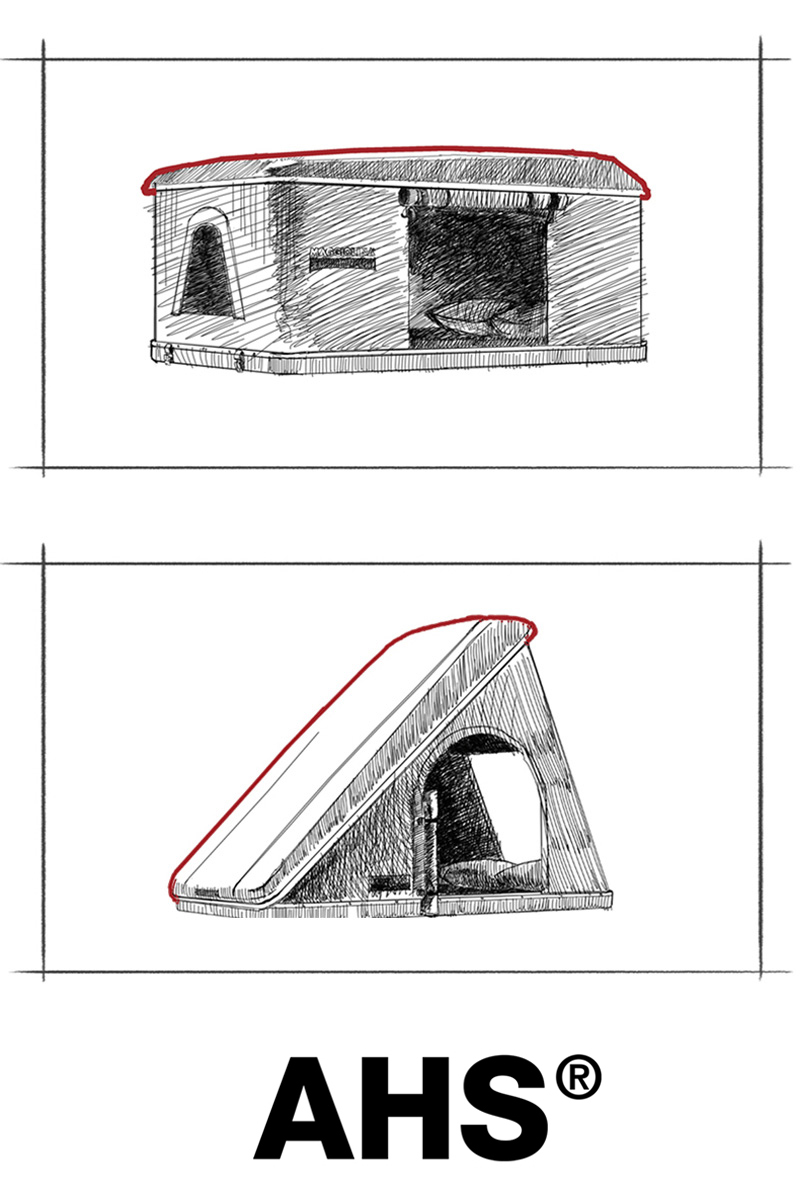
INSULATED ROOF
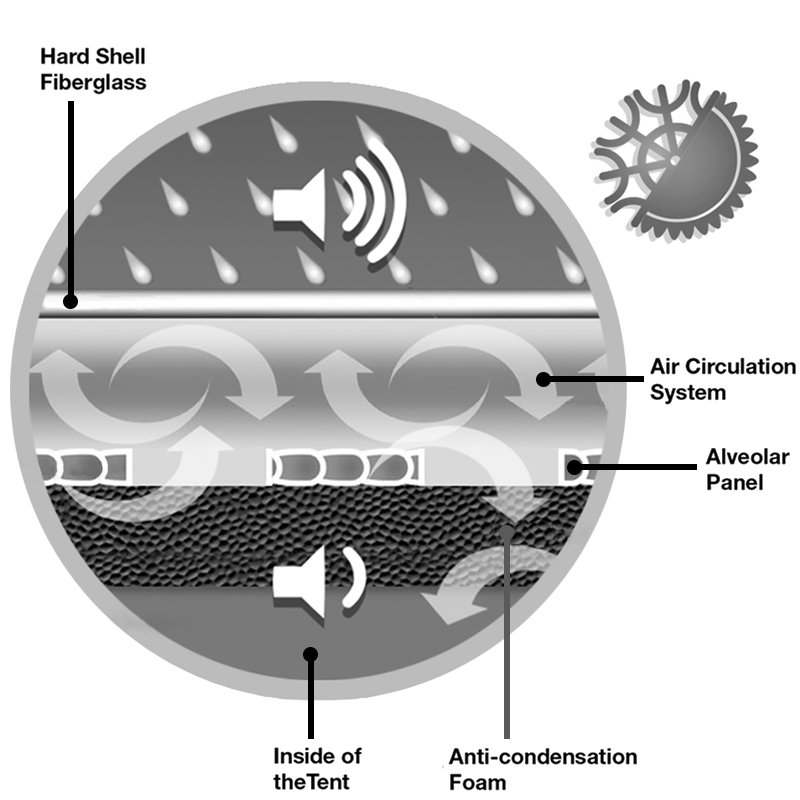
In fact they have a little less internal habitability than fabric tents, but just choose an adequate size of tent and the spaces become ideal. Shell tents are more compact and stable than fabric tents, especially in storms. They completely prevent infiltration. Welded fabrics, double sheets and PVC cannot compete with a rigid roof, among other things made of fiberglass which is also equipped with an insulating inner membrane. Not surprisingly for quality fabric tents, such as our Air-Camping, for example, we minimize seams on the roof. Let alone put zips on the roof or windows, as it appears on certain low-cost models from Asia.So, to sum up, I would say that the main advantages of shell tents are: an extraordinary stability without sacrificing the speed of opening and closing; to this is added the fact that the mattress is slightly higher and does not fold like the fabric tents. It is a unique piece with no joints In addition, shell tents have no limits in deciding the location of overnight stays in public areas, because the tent and ladder fall within the shape of the car.
The disadvantage, if we can define it that way, is only one: a higher cost of purchase than the fabric tents. But I strongly invite you to consider what they can guarantee over time in terms of comfort and safety, especially in adverse weather conditions.
Returning to fabrics, but considered as materials, what can we specify as a focus of attention to our readers? 

It is a decisive choice in a tent, it naturally affects its quality and costs. Everything is on the market: more or less heavy, breathable, waterproof fabrics. In detail, it ranges from fabric with high impermeability or watertightness such as PVC, to lightweight nylon such as in Igloo tents, to coated, resined, synthetic, acrylic, eco-friendly fabric, natural cotton and mixed fabrics. Autohome does not trust products from markets outside Europe, let alone Asia, and this is because quality is too variable. Our purchasing department is particularly attentive to this issue. In summary: for fabrics, as for yarn for stitching and also for mosquito nets we turn to Made in Germany suppliers of great seriousness and specialist expertise. This allows us to leave behind unreliable production paths. For example, making tents using double sheets: they are too fluttering and unstable solutions that create turbulence in the wind, in addition to causing bulk. I think it is essential to use the most breathable fabric possible or, in any case, a the fabric that best transmits heat and condensation to the outside, obviously it must be waterproof. A perfectly breathable fabric is certainly more expensive, but it is what allows you to get a cooler and healthier environment. Autohome tents have a high degree of breathability and optimal heat transmission to the outside. That's why they don't need to use fans, vacuum cleaners or extractors to spin the air. Next to the fabric, packaging and stitching must be considered. We always try to avoid them at critical points. On this subject, I say that I have little confidence in the chemistry applied to fabrics: for example, hot tape adhesives do not satisfy me; sometimes with temperature changes they lose grip. In my opinion, better mechanical solutions or alternative packaging methods are better. The most exposed zips, in particular, must be of high quality standard. Ours, the tents most exposed to water, are all waterproof and above all “spiral”, to resist abuse and wear. As you can easily understand, even here you need to be certain before buying. Above all, do not be enchanted by certain prices offered by unknown brands or without a history, often present on the Internet. The concept is almost trivial, but always important and must be remembered: even in our sector, nobody gives anything and every decision has its price.




But an expert like yourself, Mr Fercodini, directly involved in the sector, which tent do you personally use?
When I was young, my first tent was Maggiolina, which has always been my favorite. What memories! ... and what years of great enthusiasm and continuous discoveries... Initially I placed it on a 1982 VW Golf, then on a VW Passat Variant from the '90s. I also used the legendary Air-Camping, but I didn't have the right car to be in tune with what an extreme traveller did, such as the great Nino Cirani, to be clear! Today I am 60 years old, I use a Columbus shell with great joy. Exactly the X-long Land Rover model. This is because I want to be 100% sure and find myself in aesthetic harmony with my personal and timeless “Defender”, year 2008. By the way, even the legendary Defender celebrates its 60th birthday! Also on this topic I have a lot to tell... maybe a next time, if you want.
